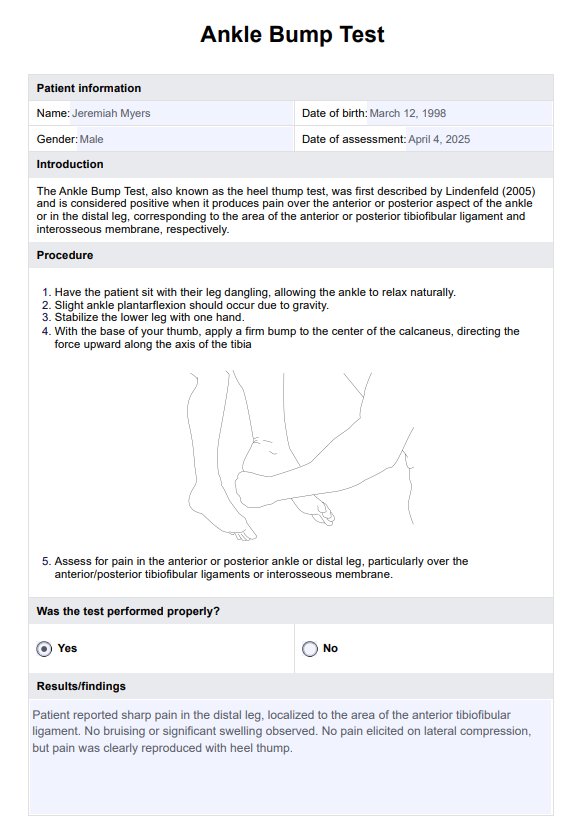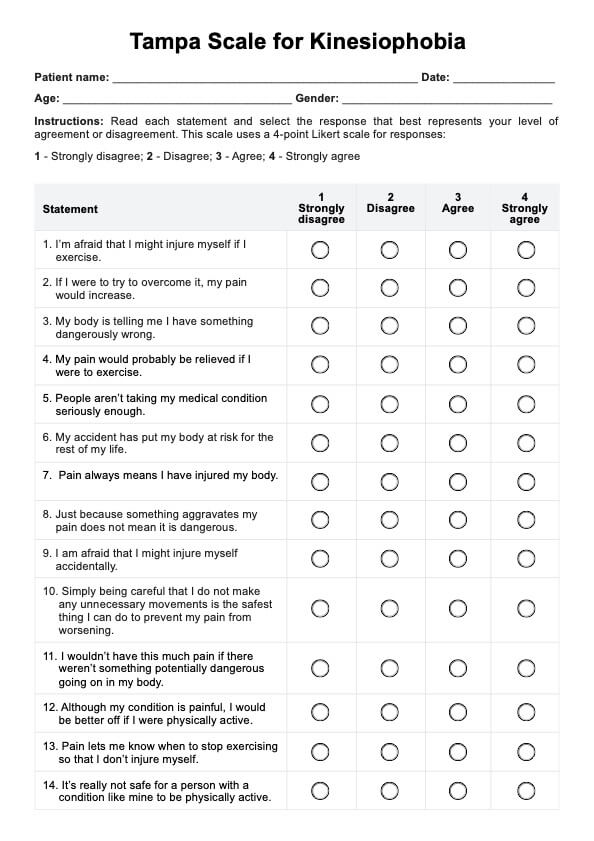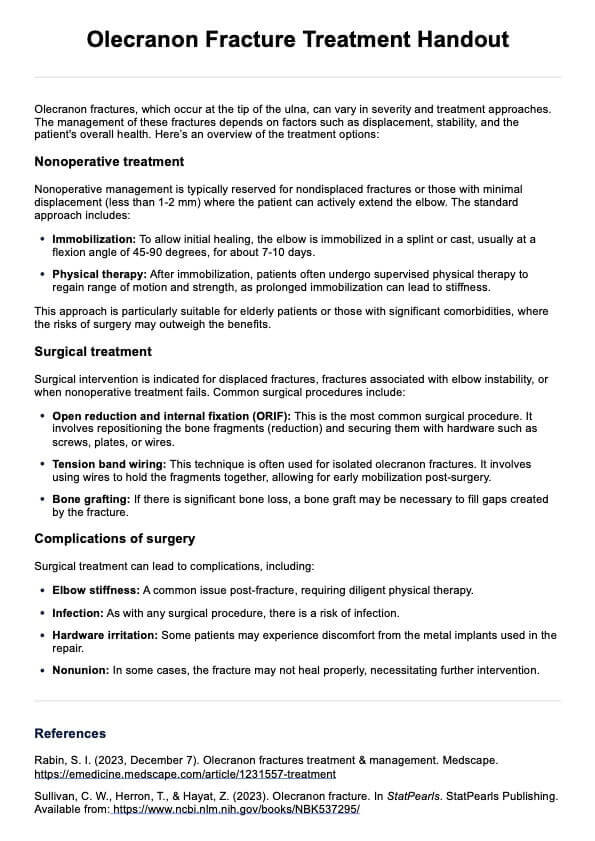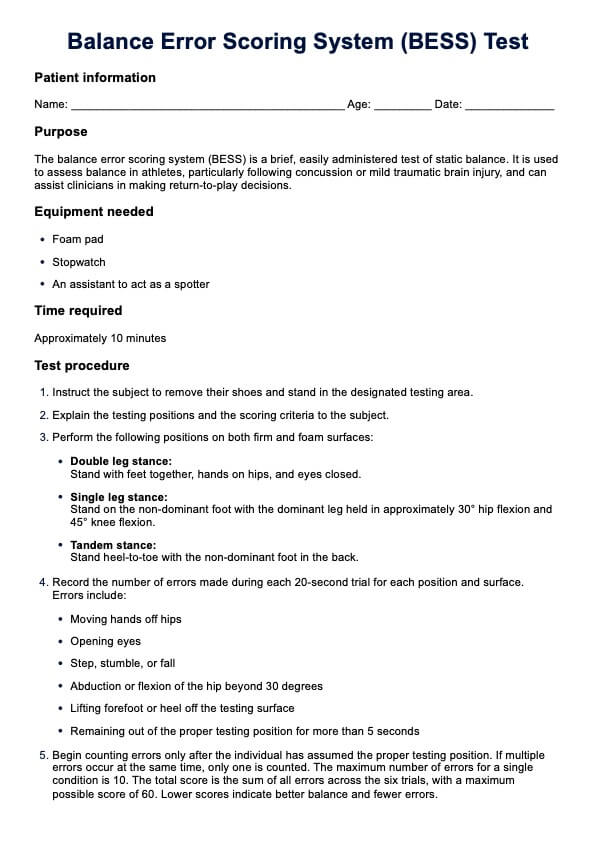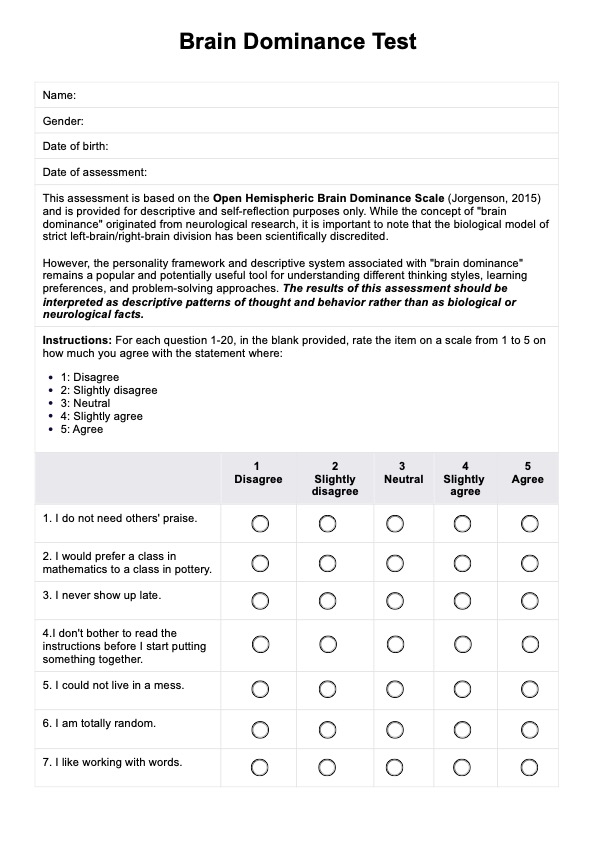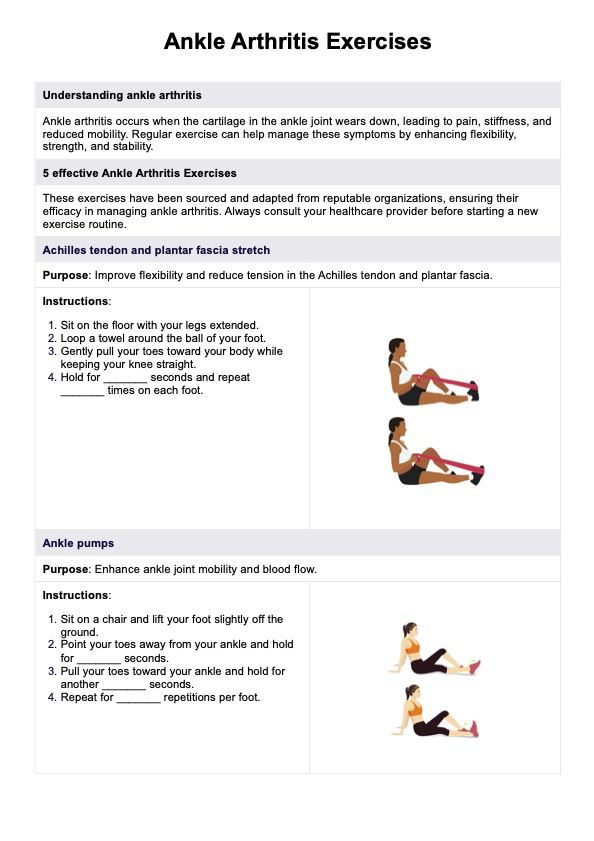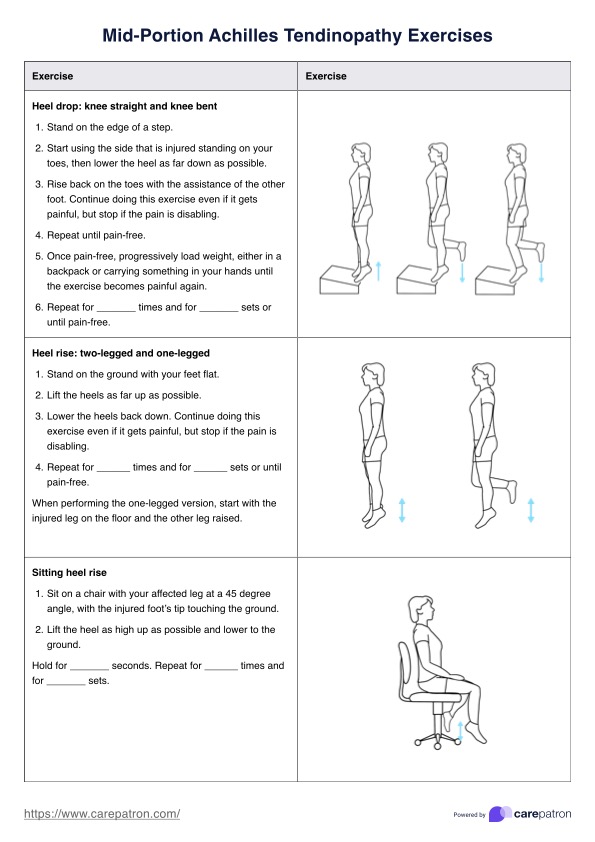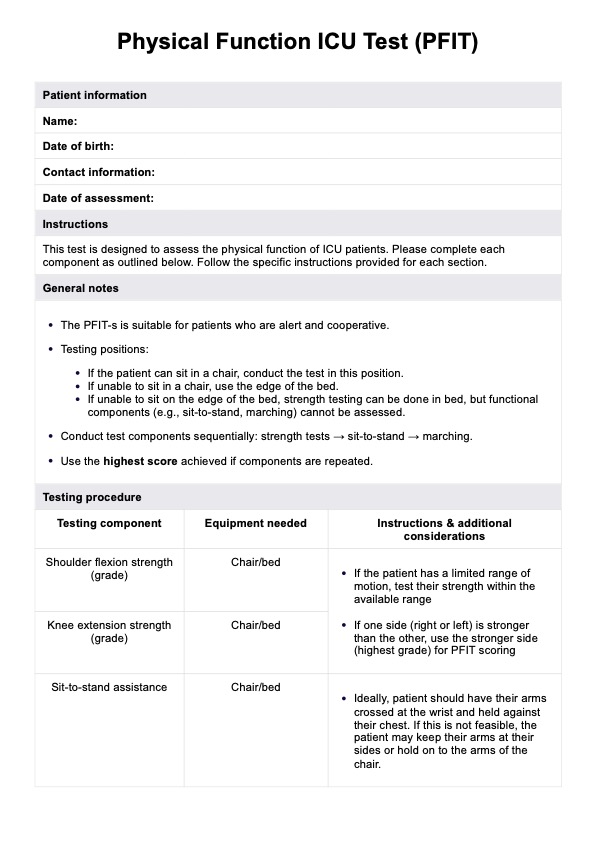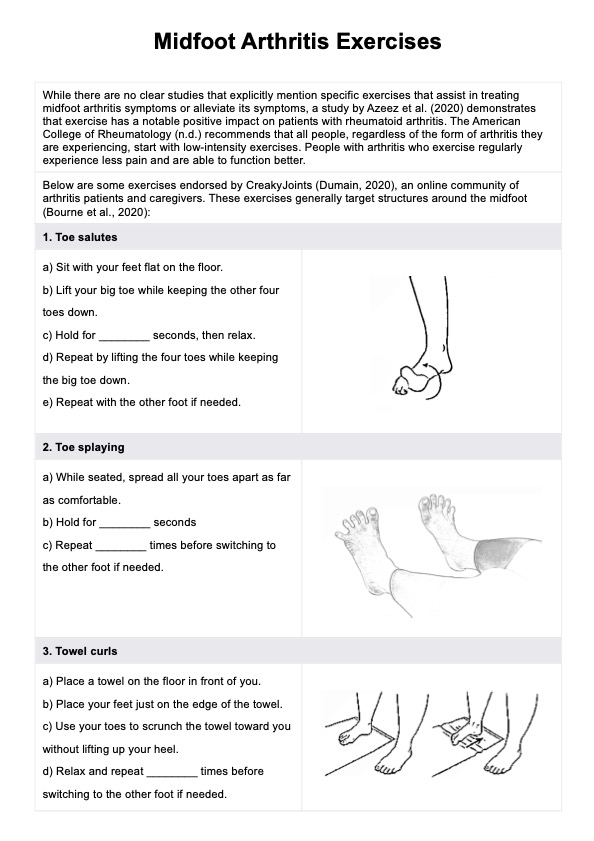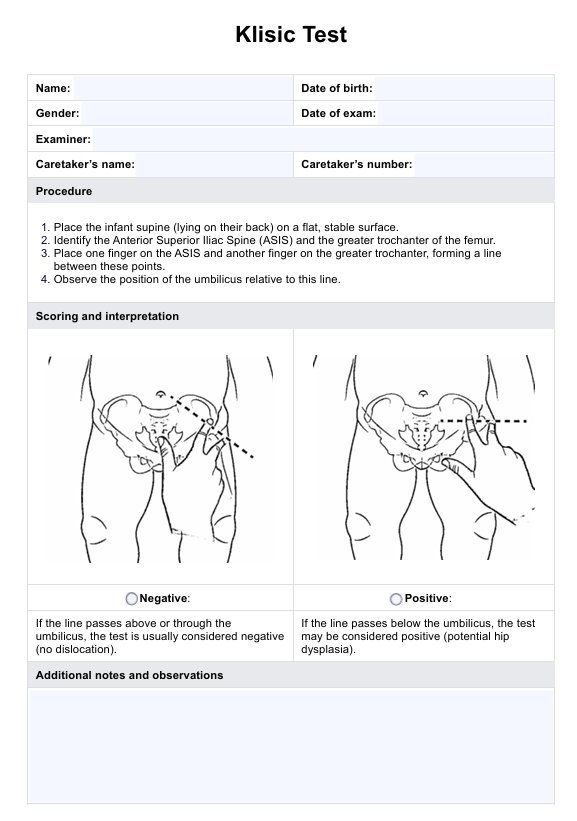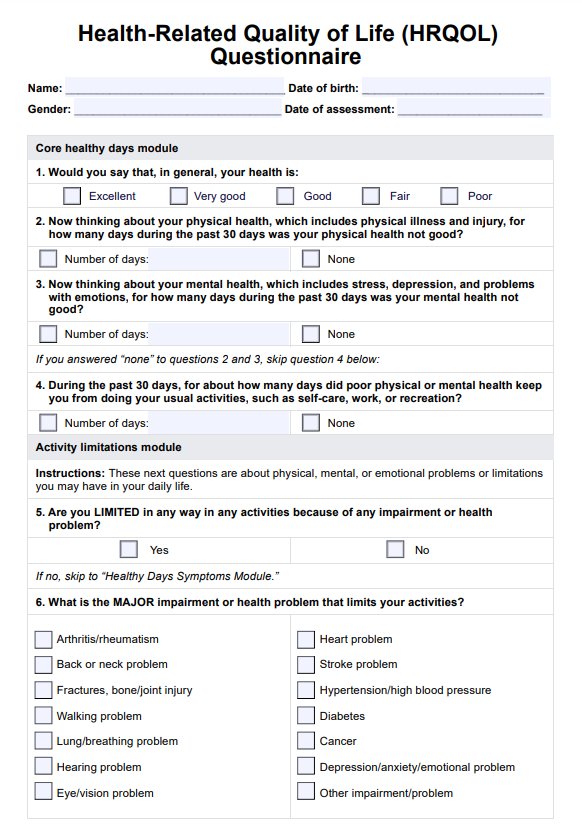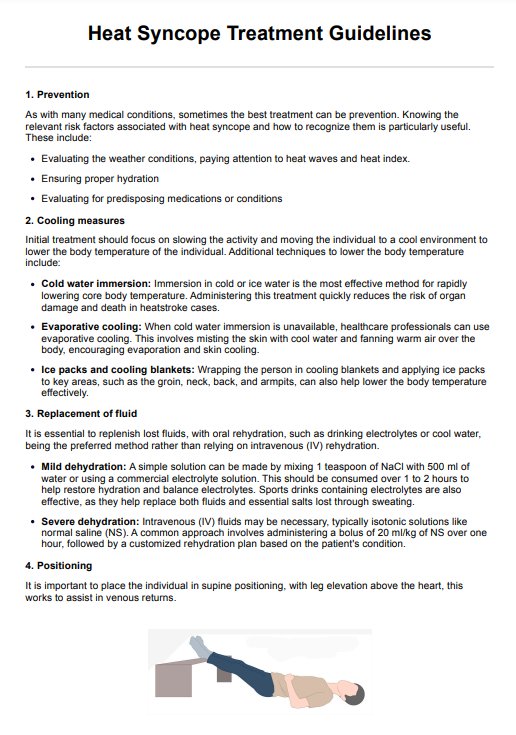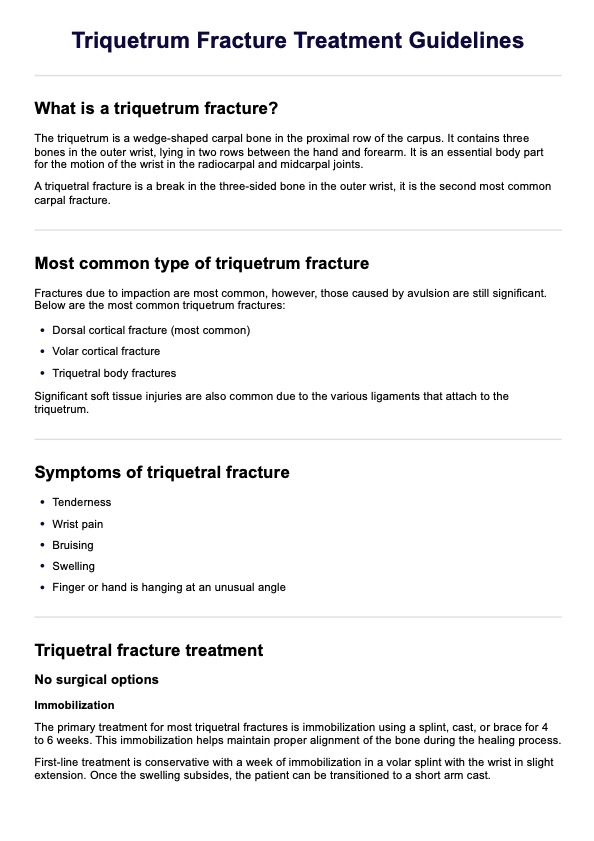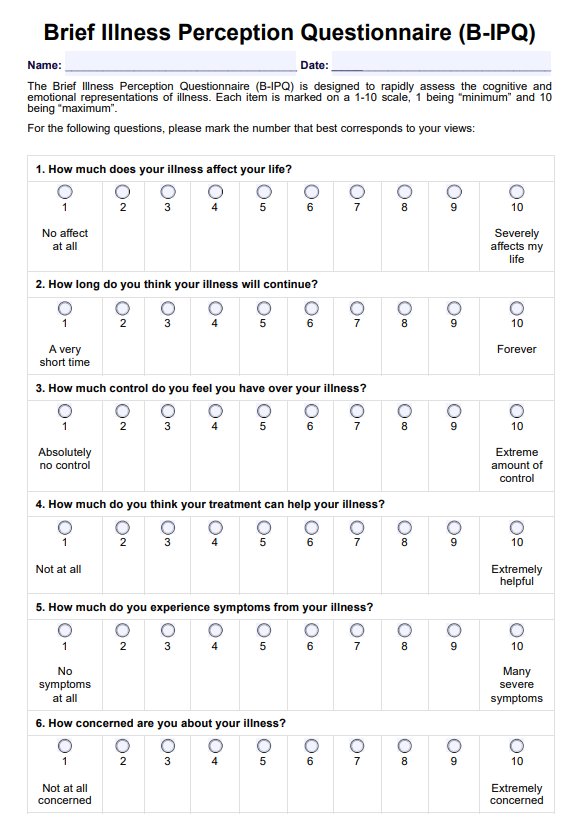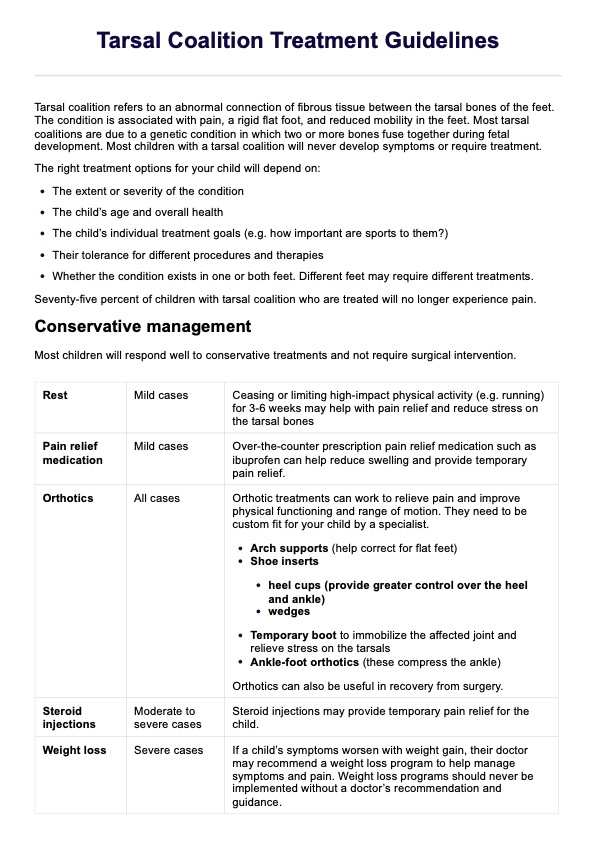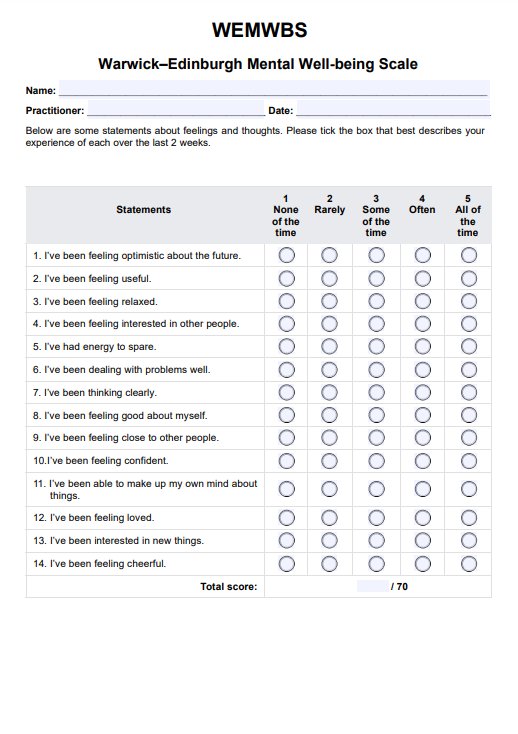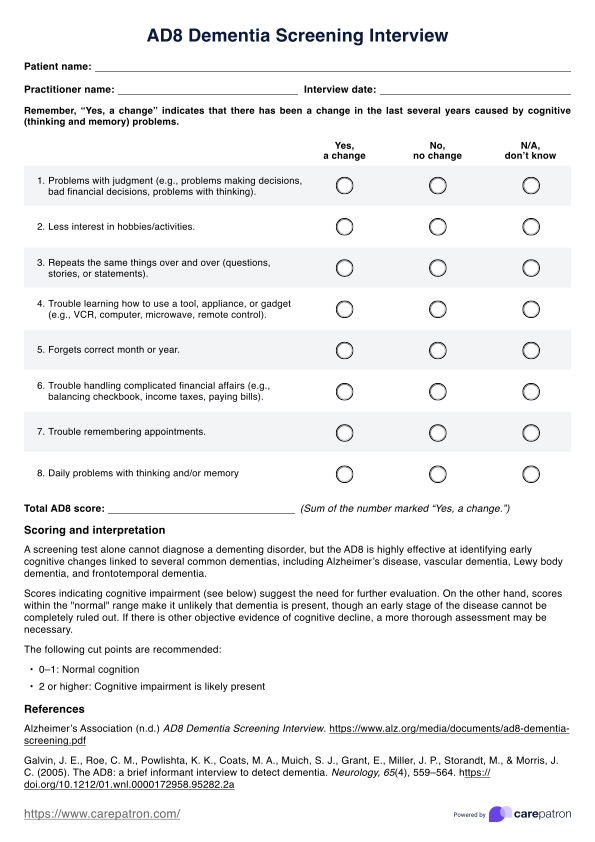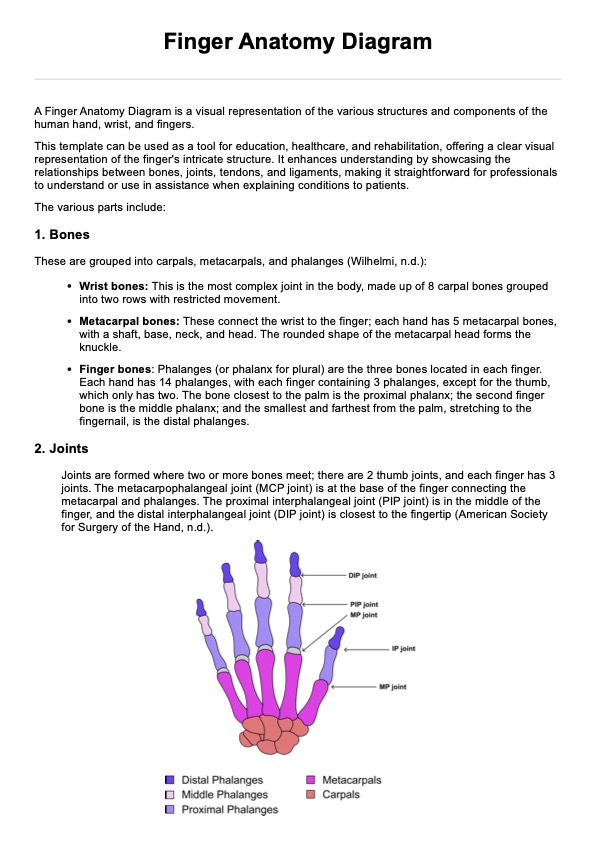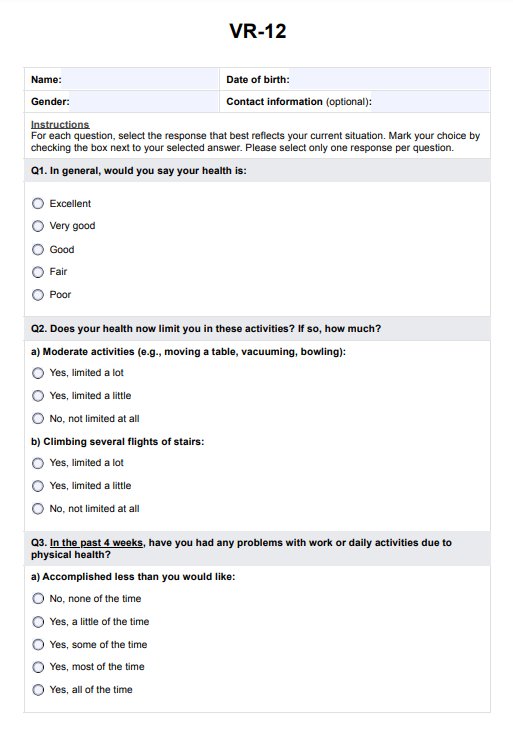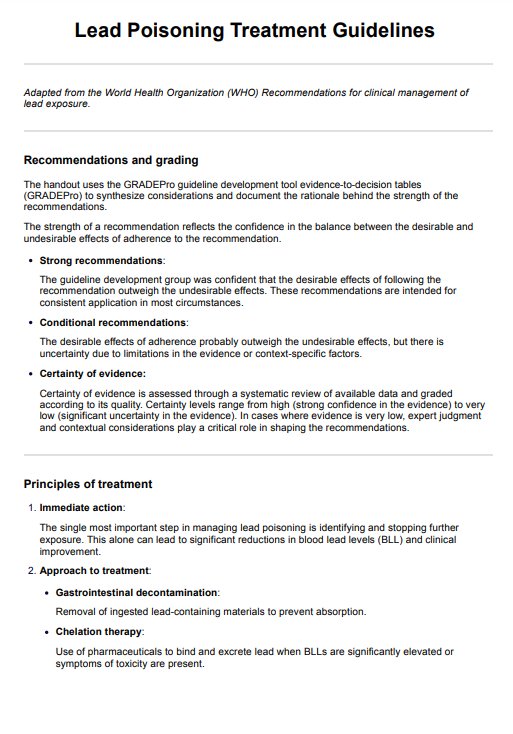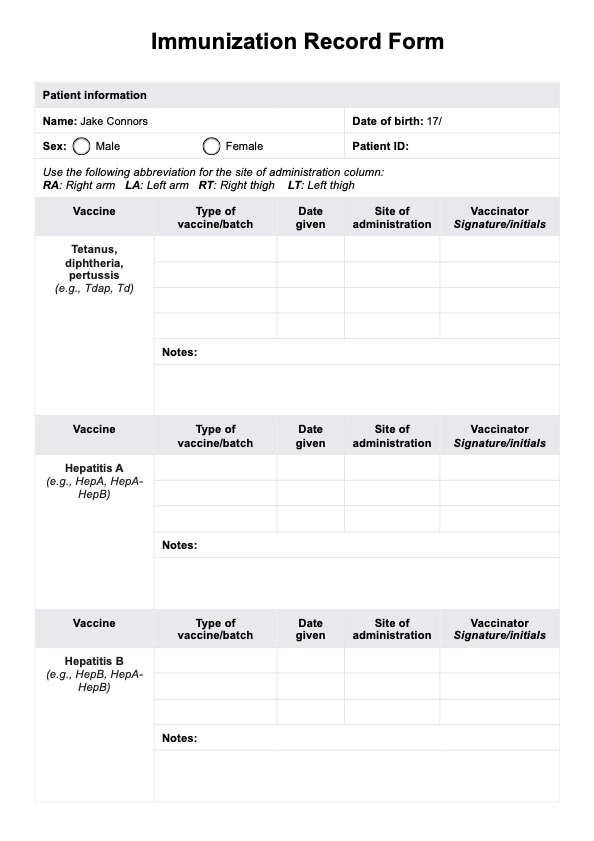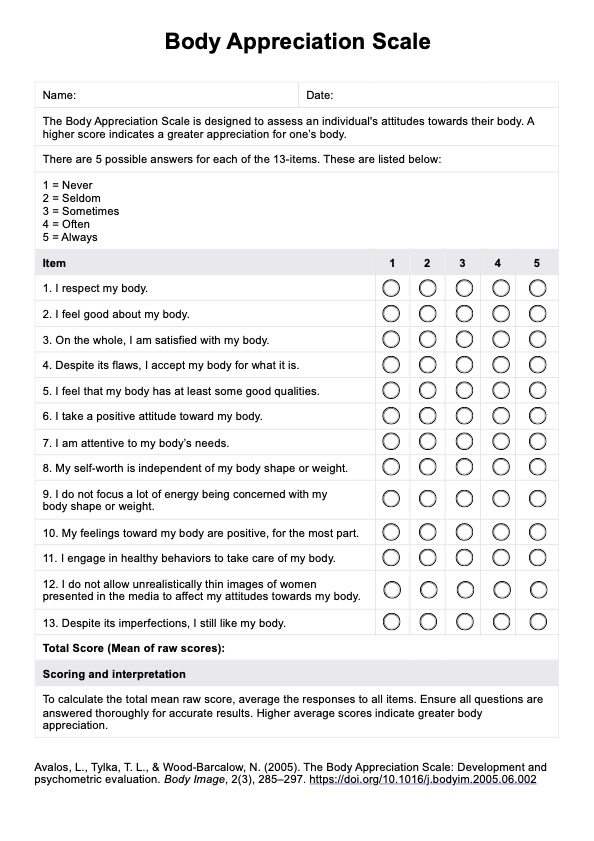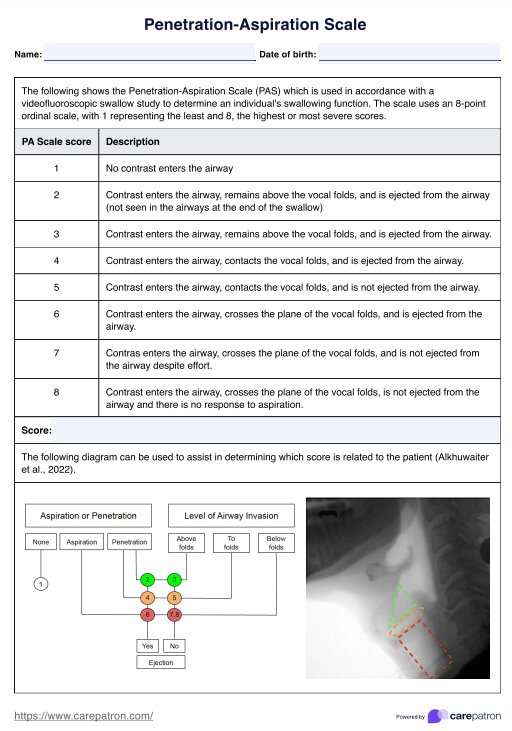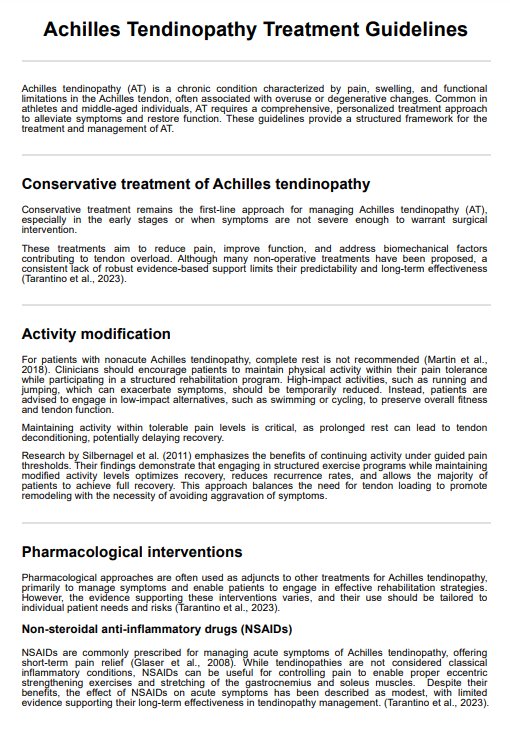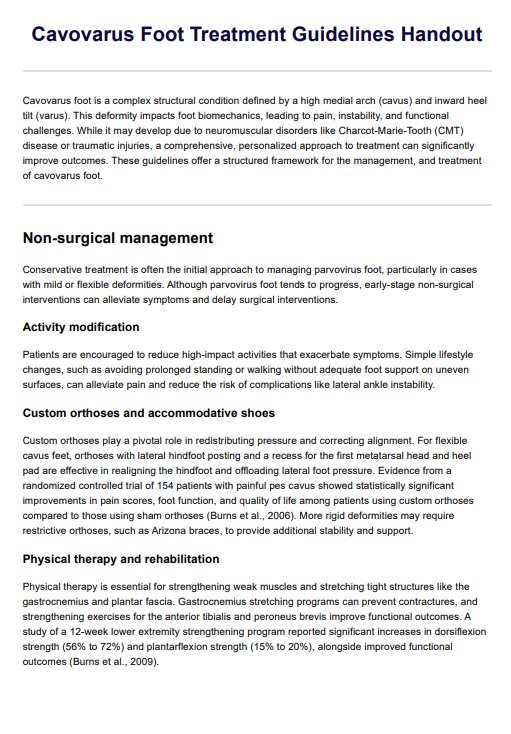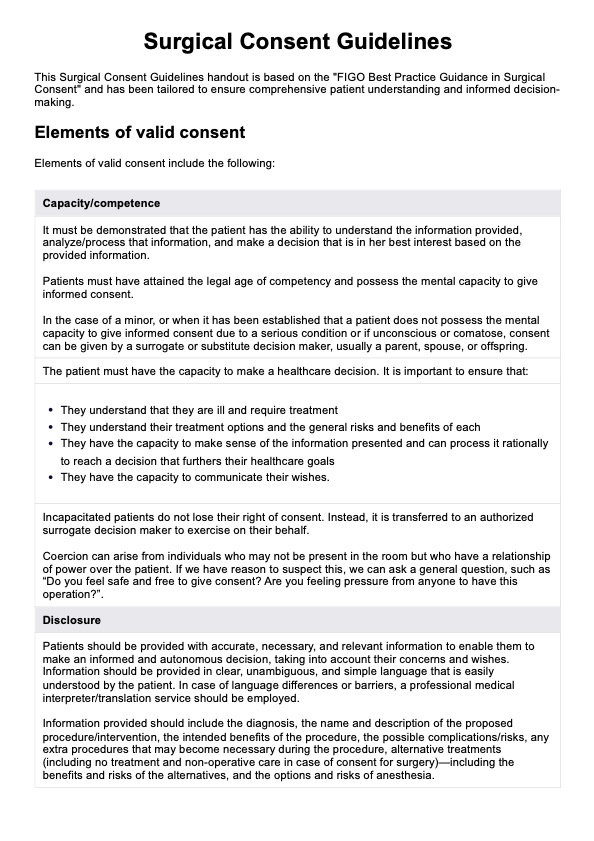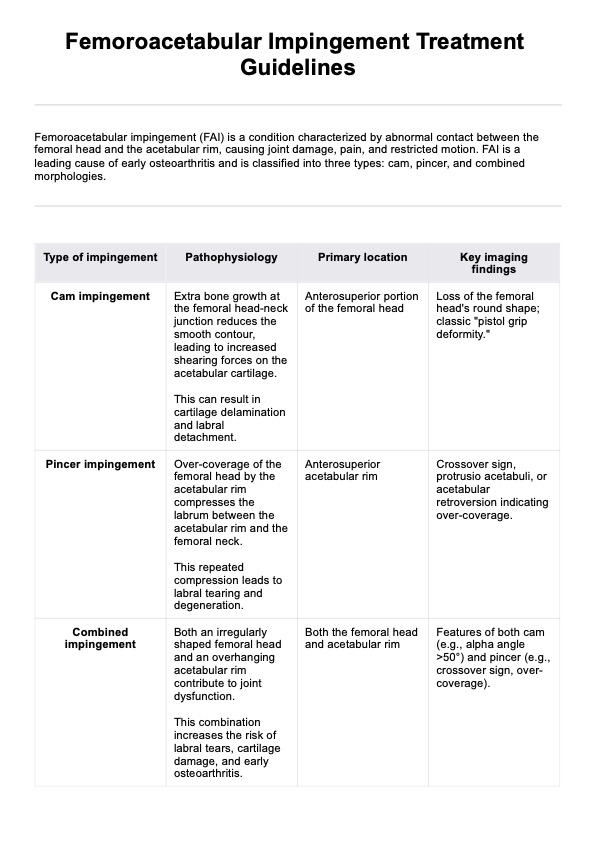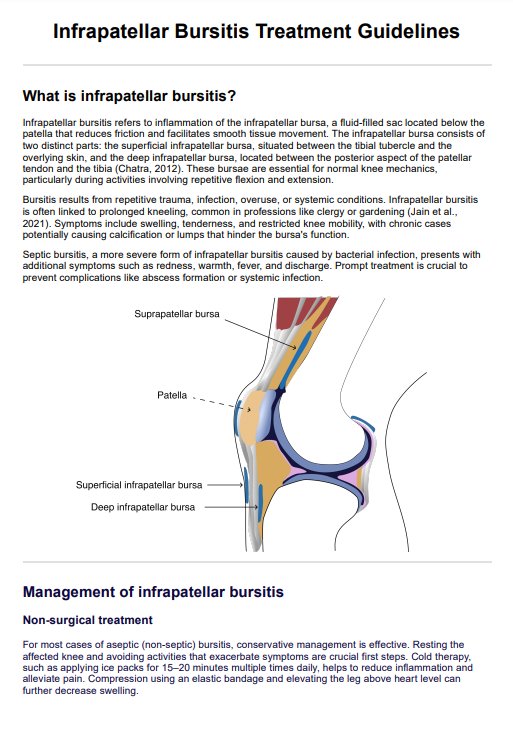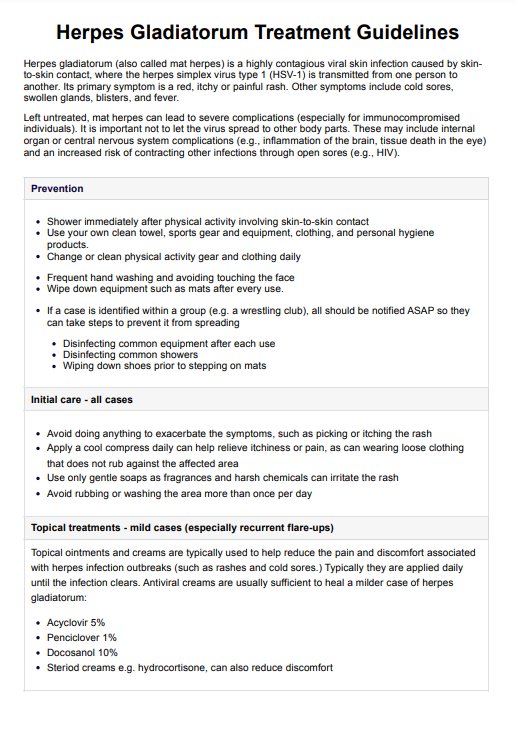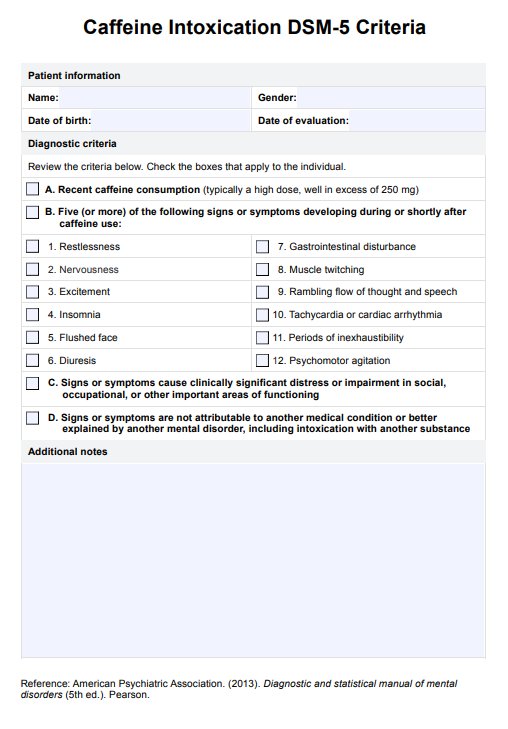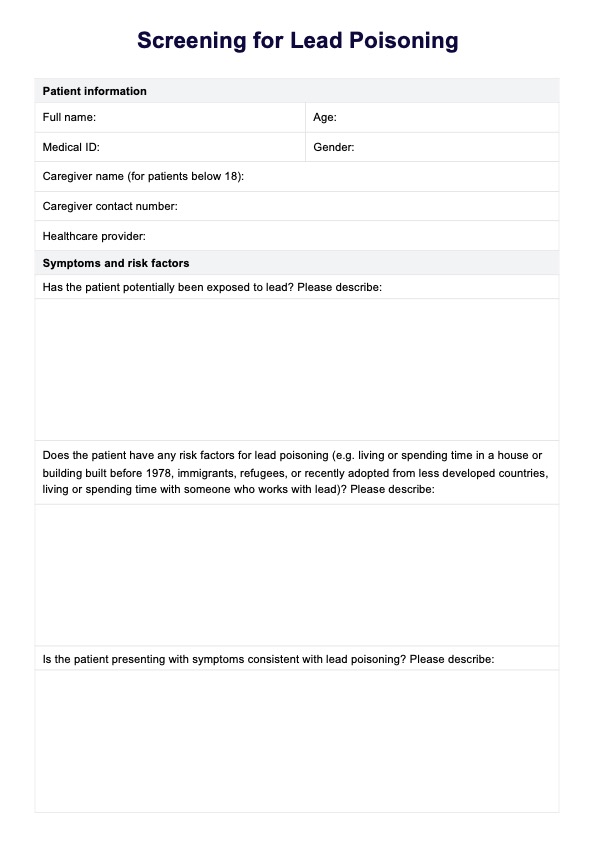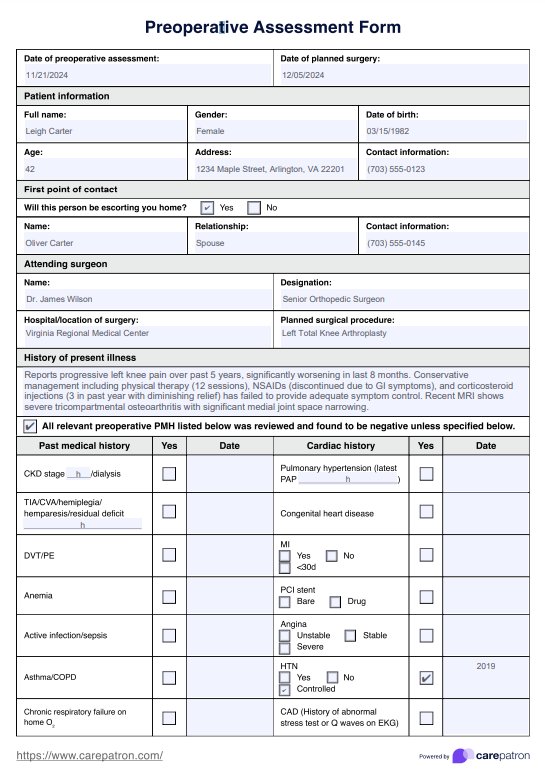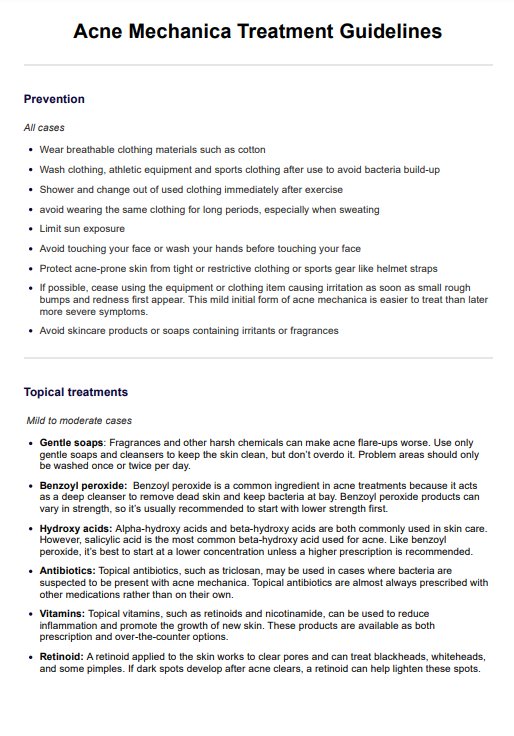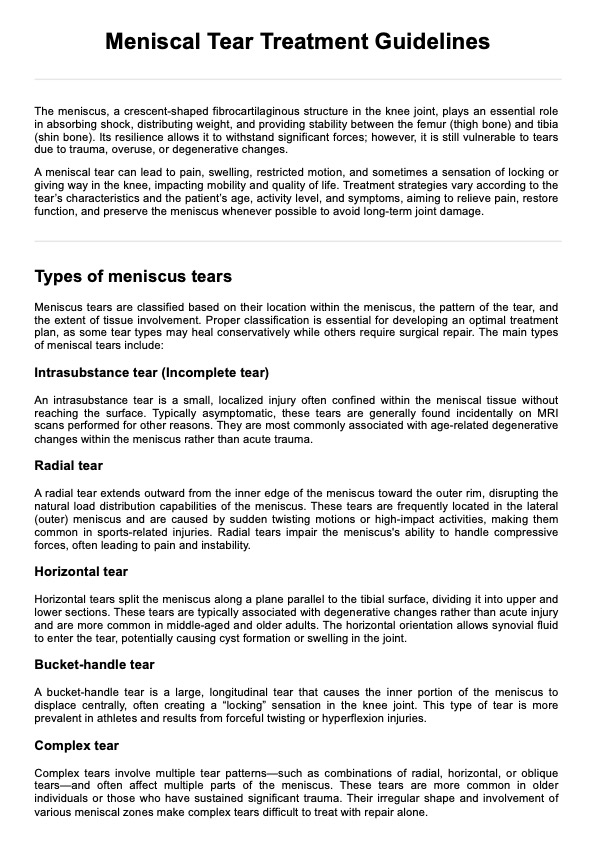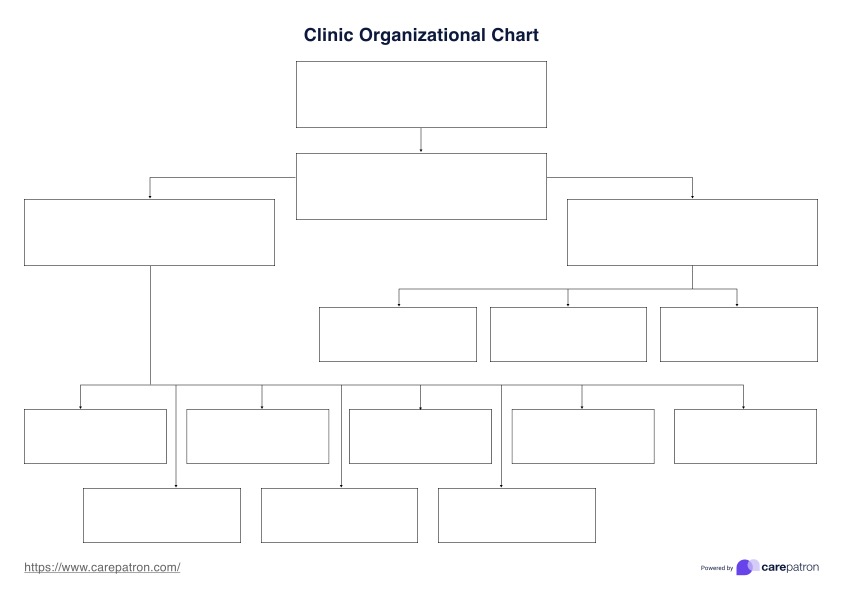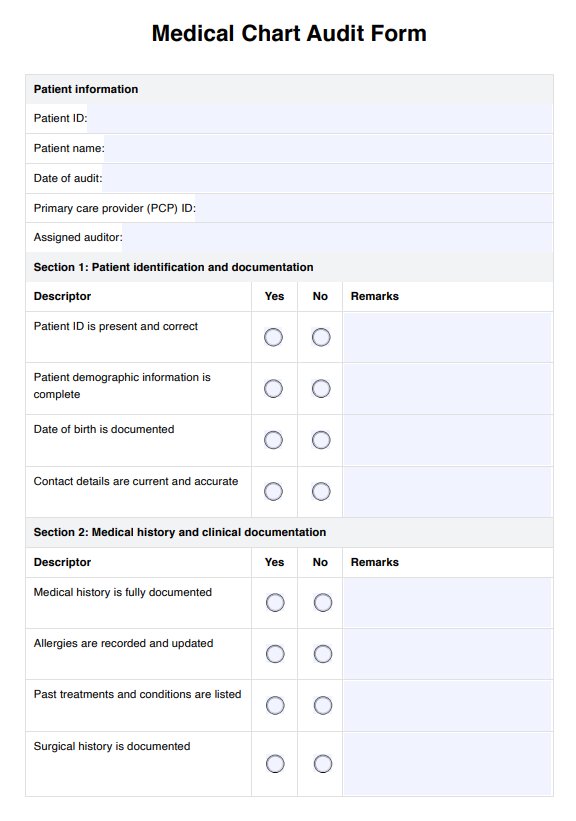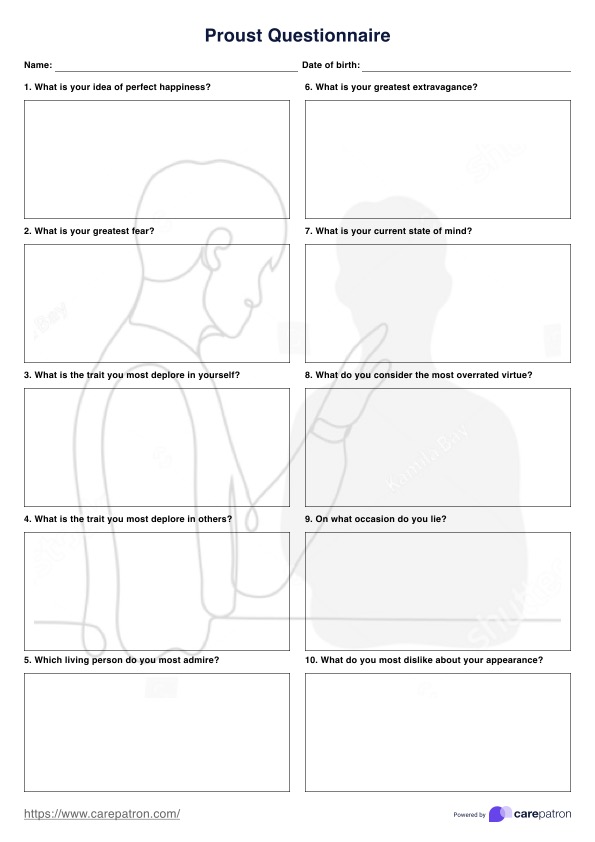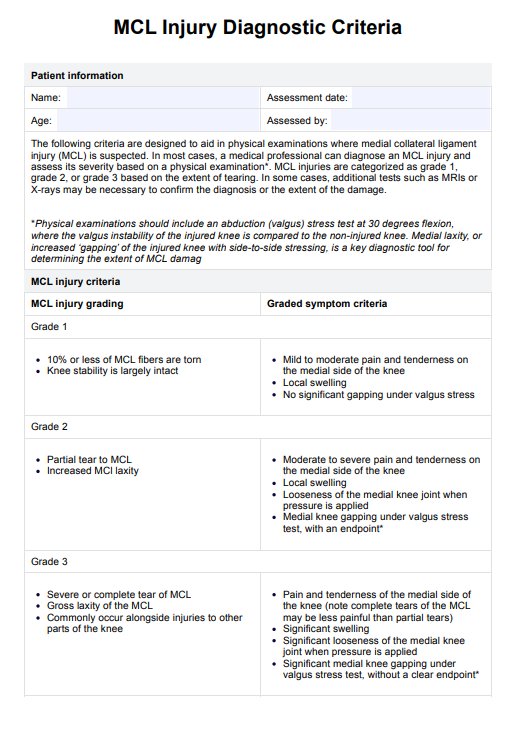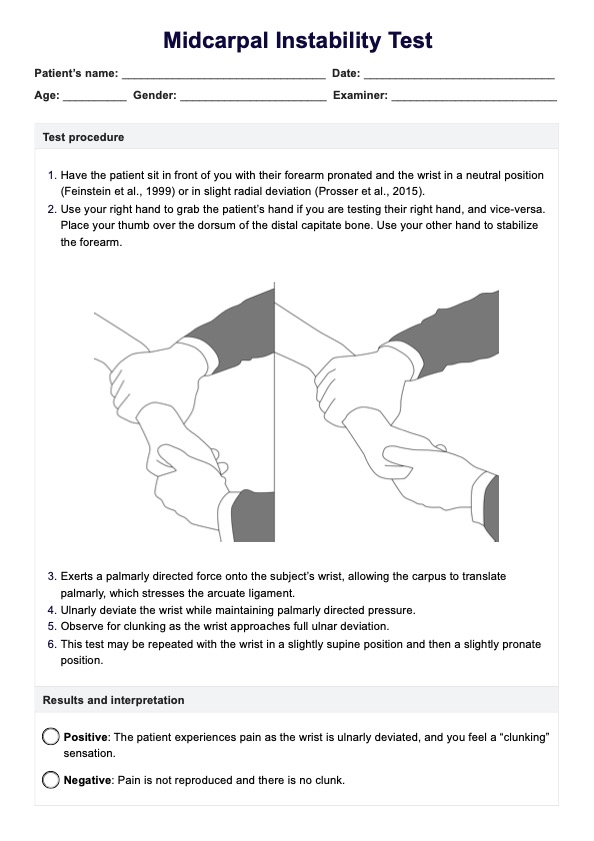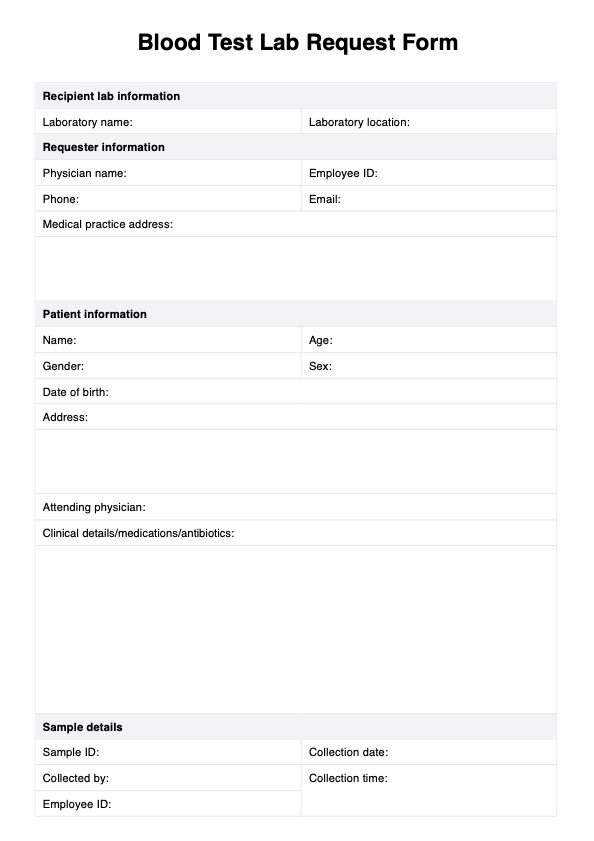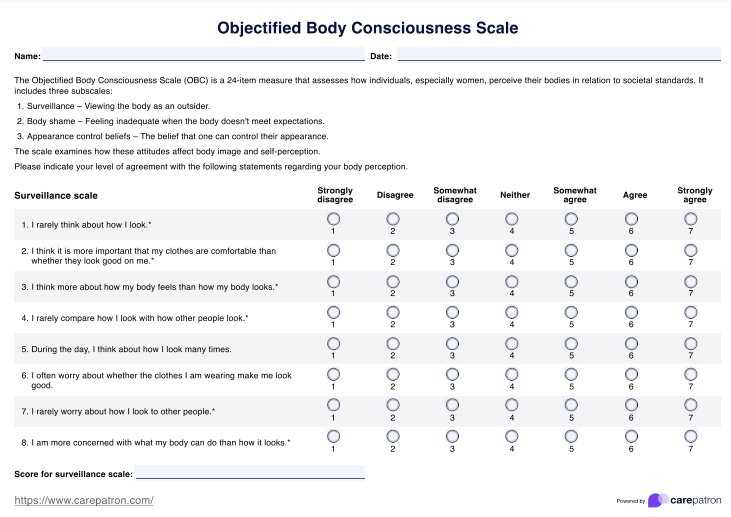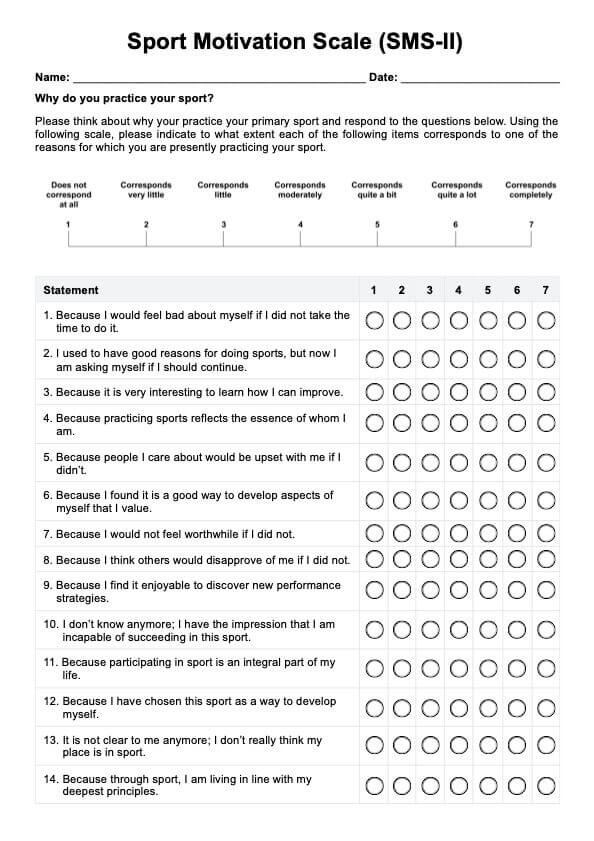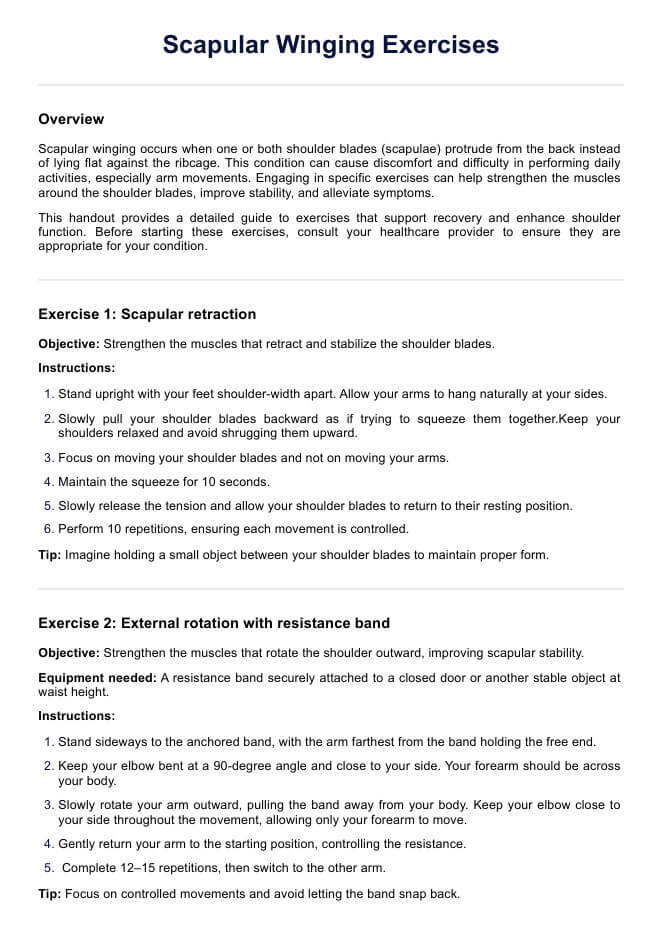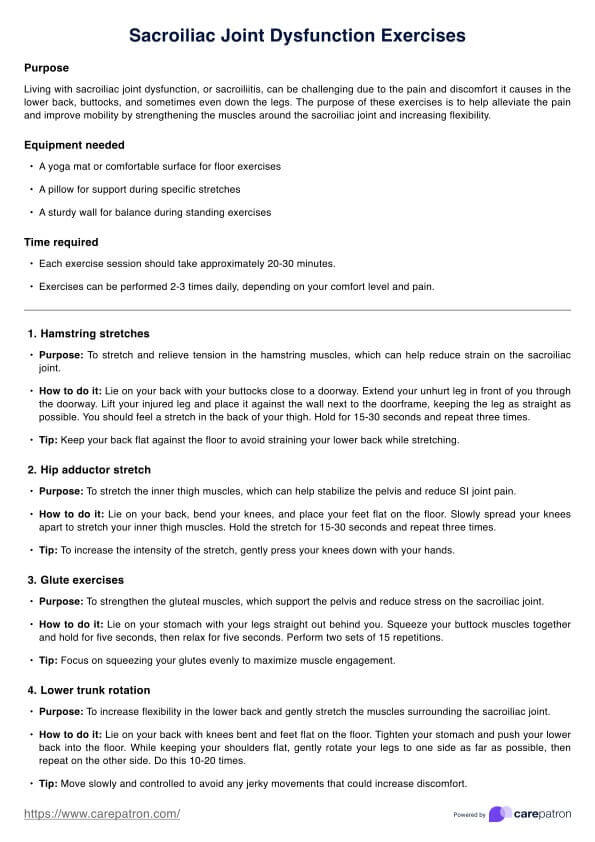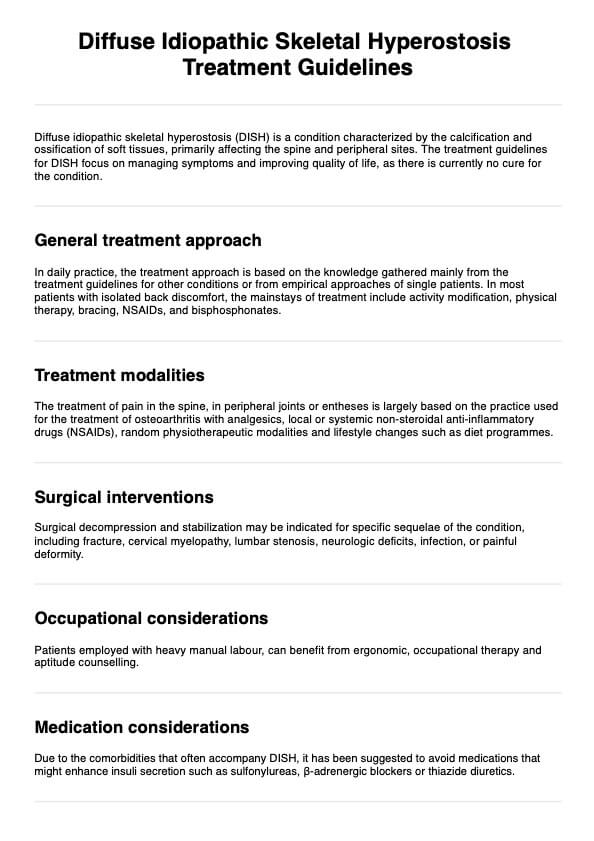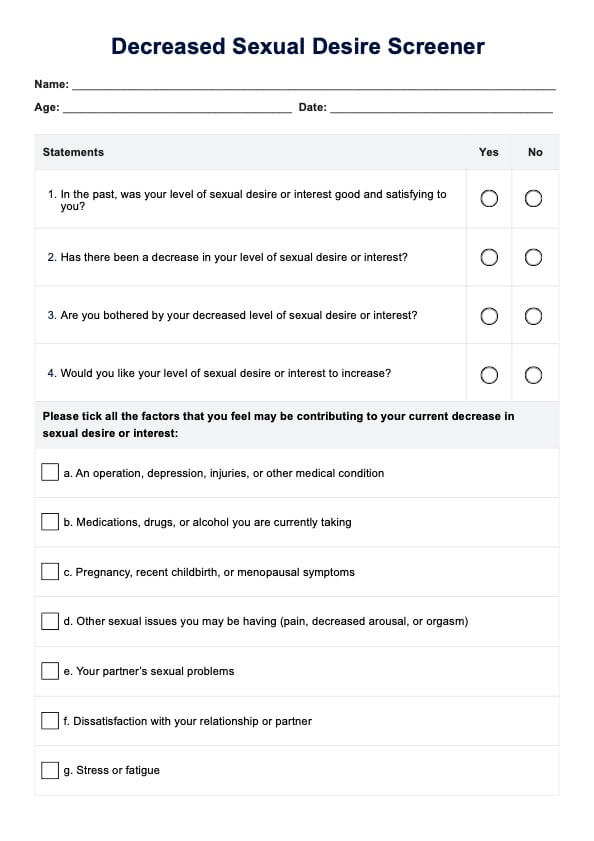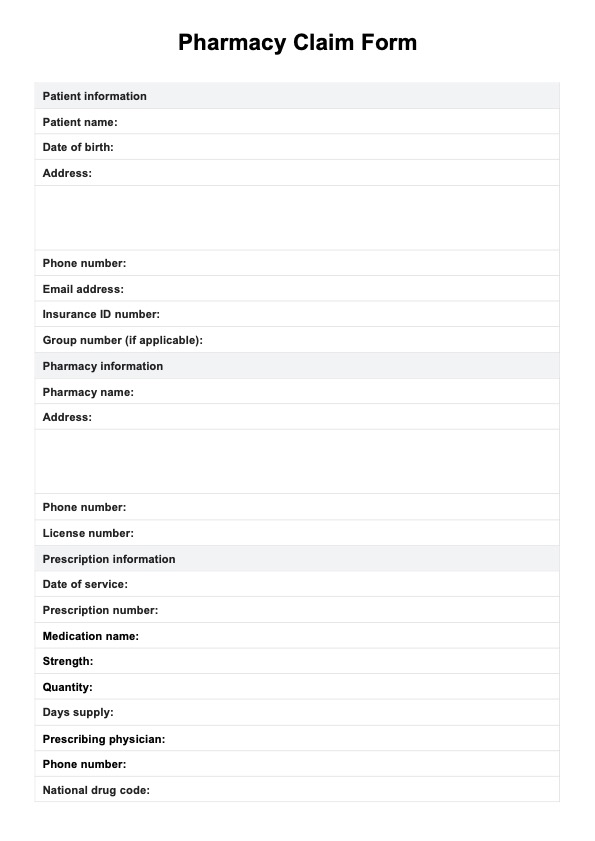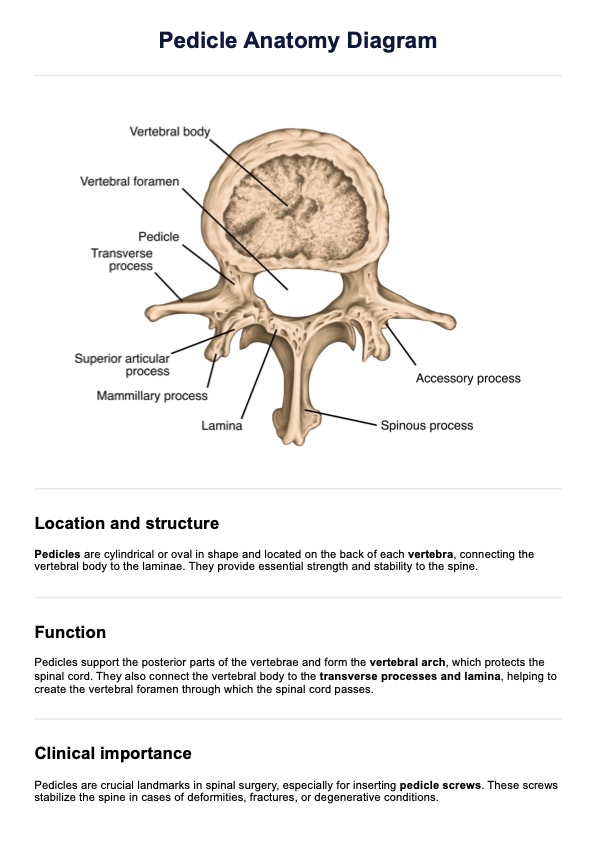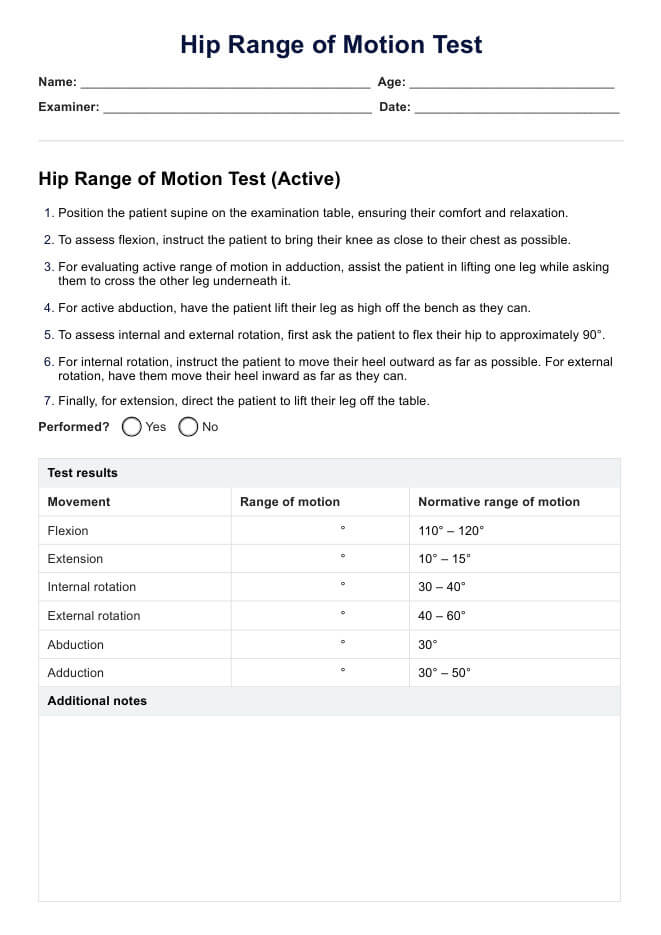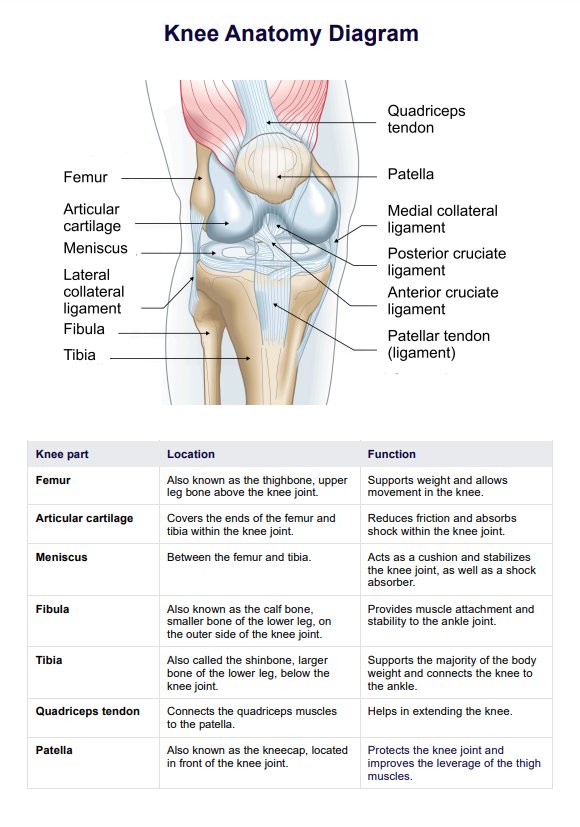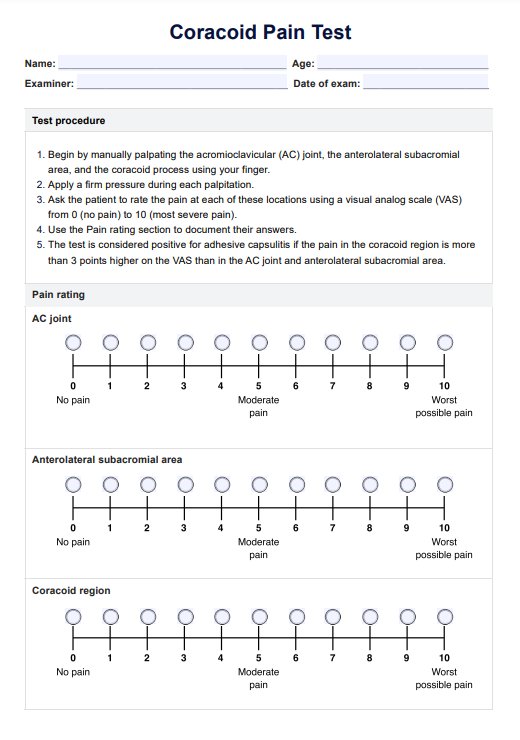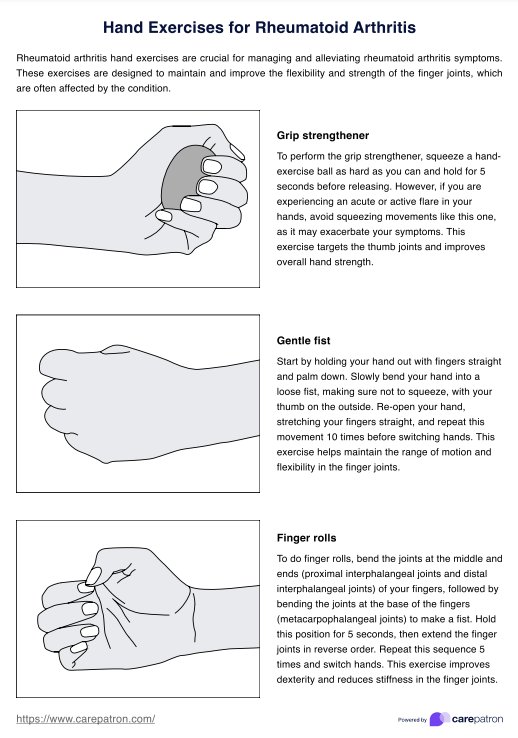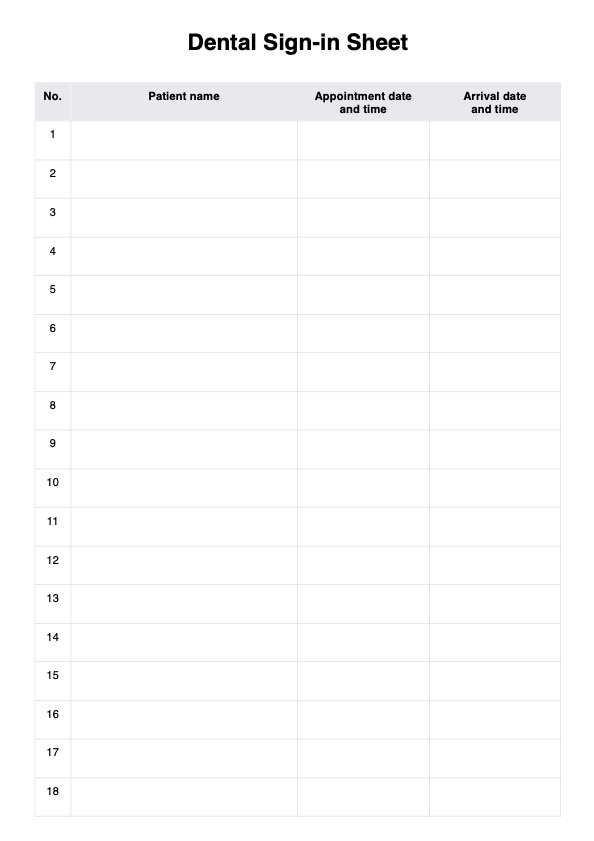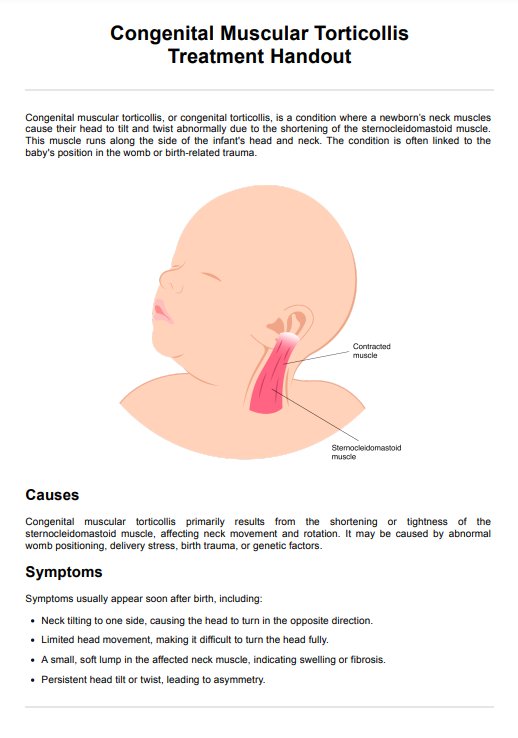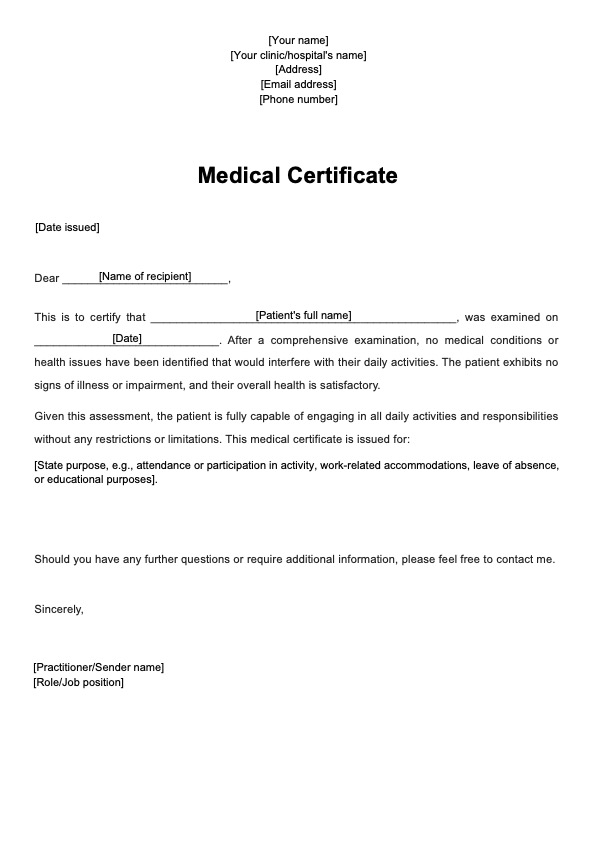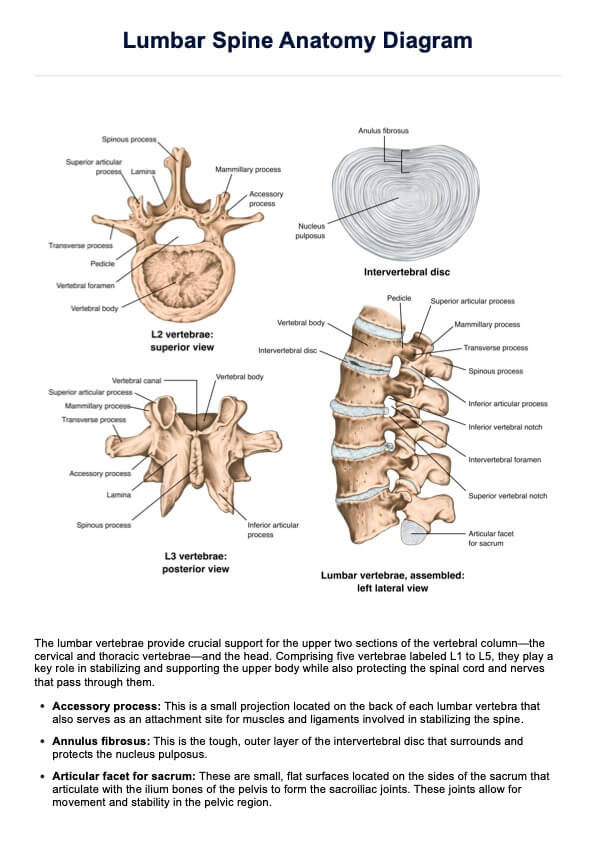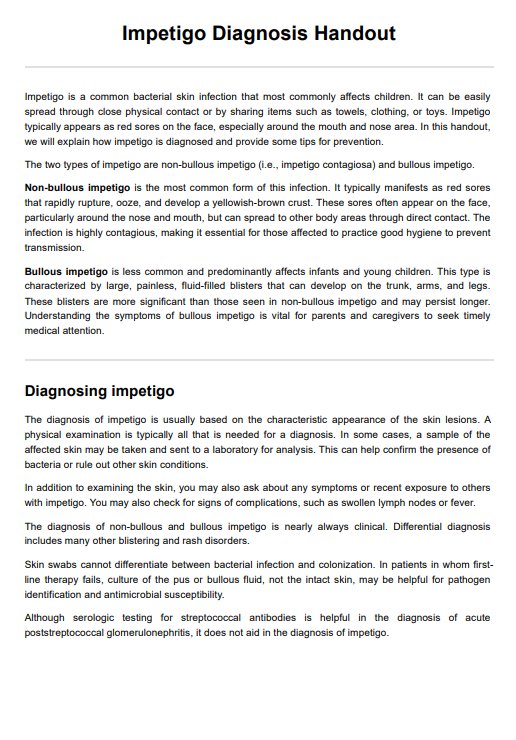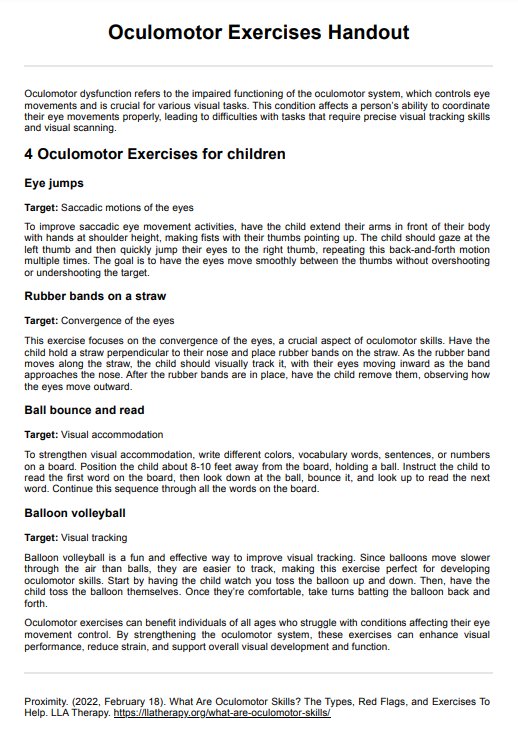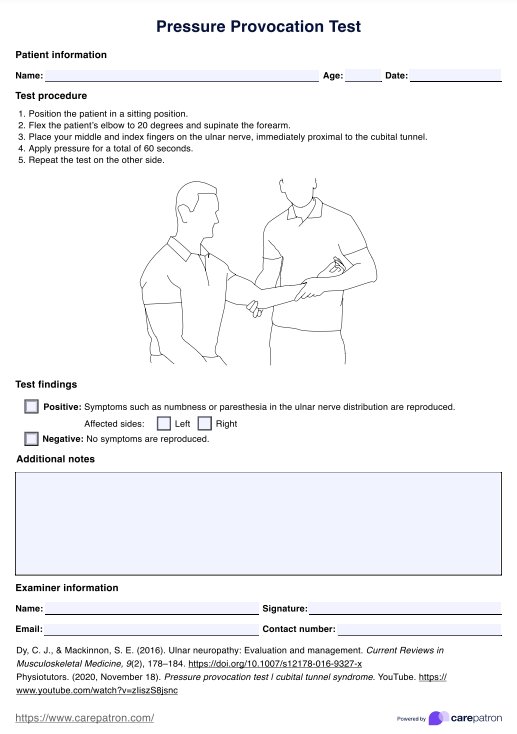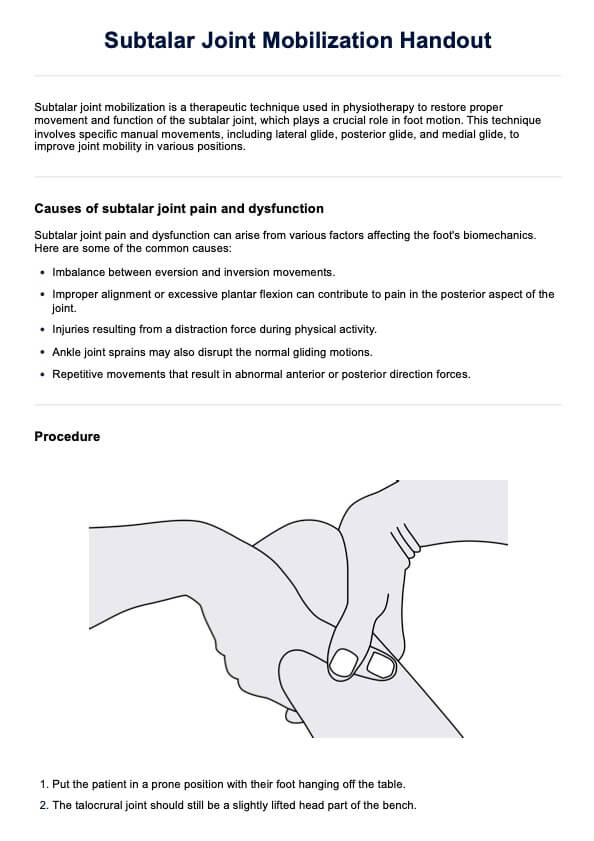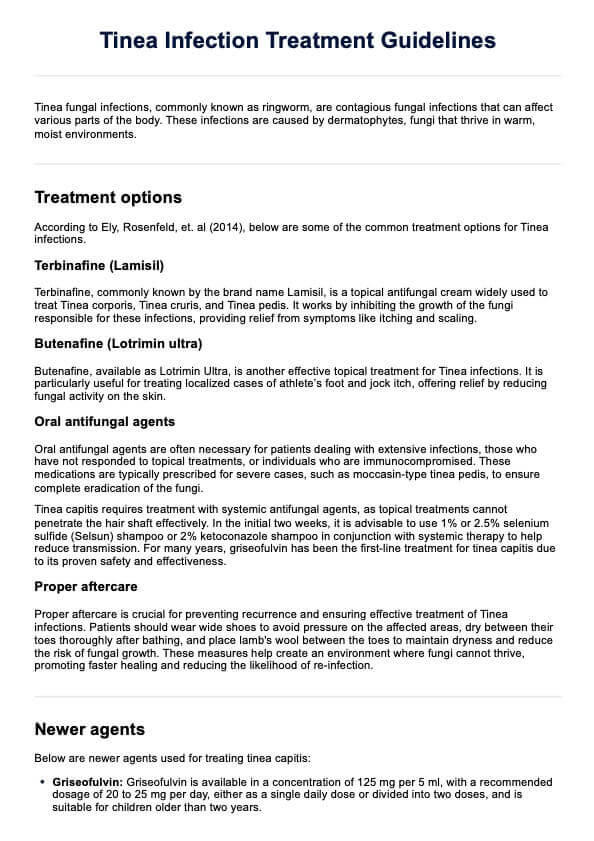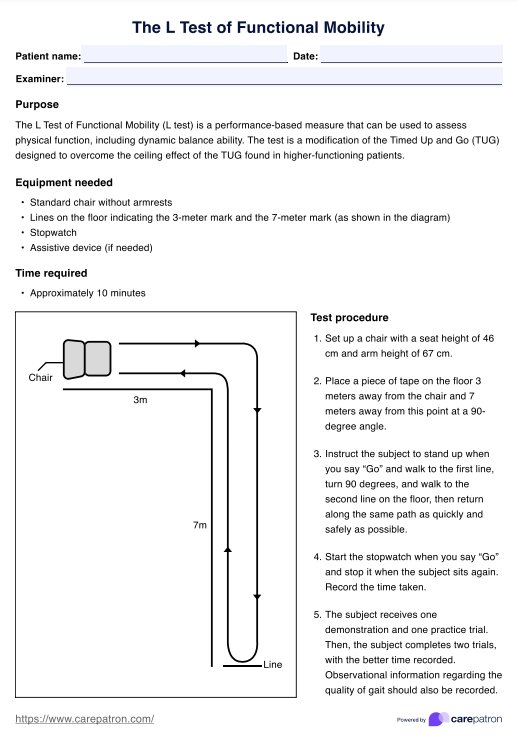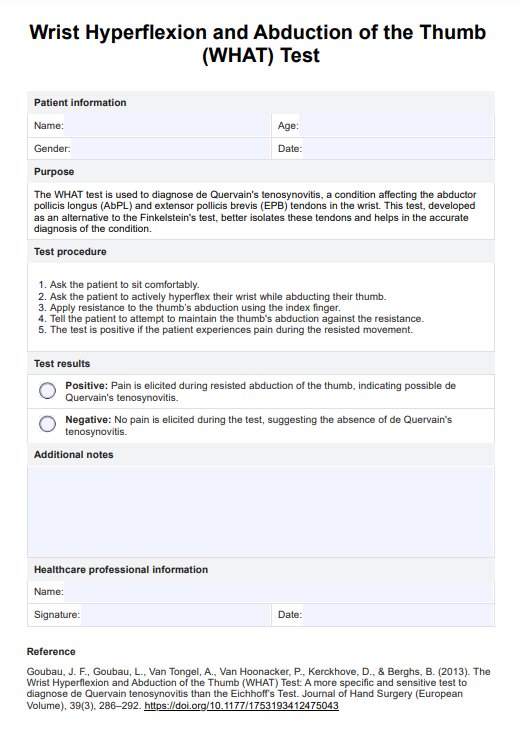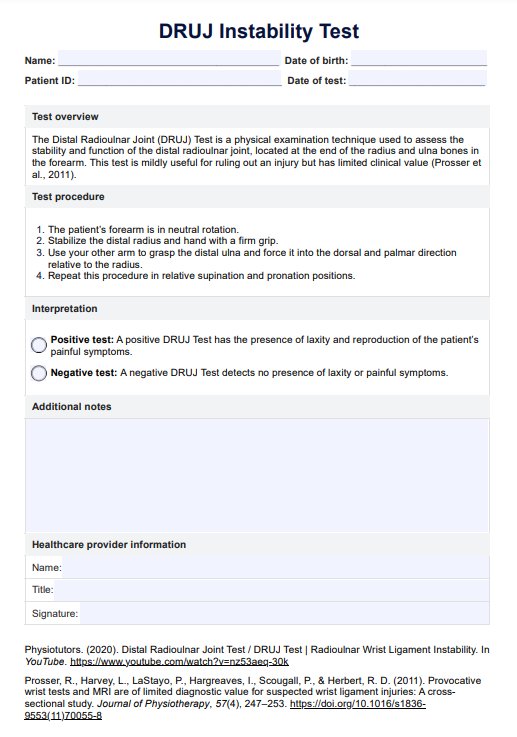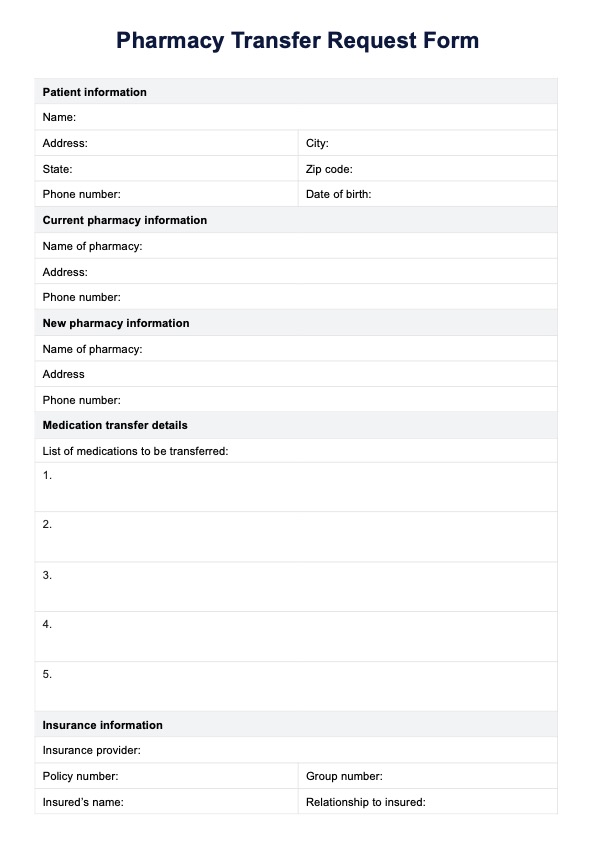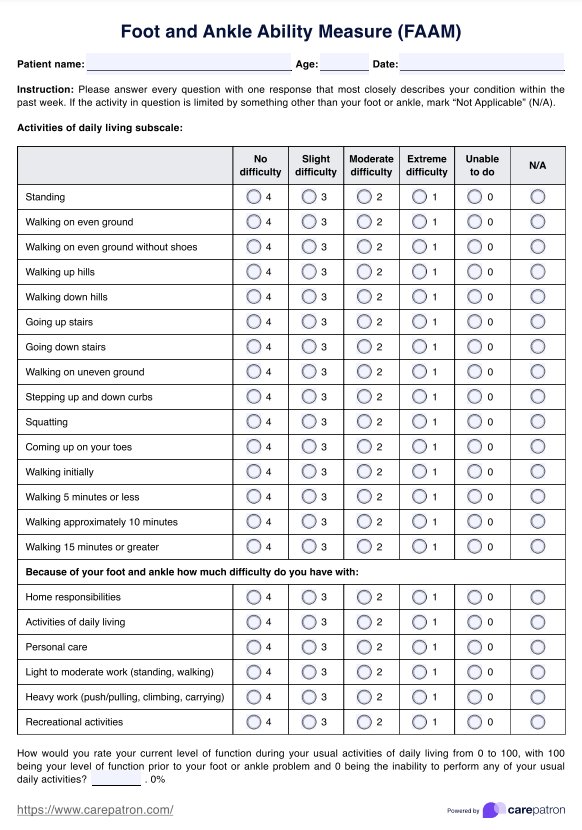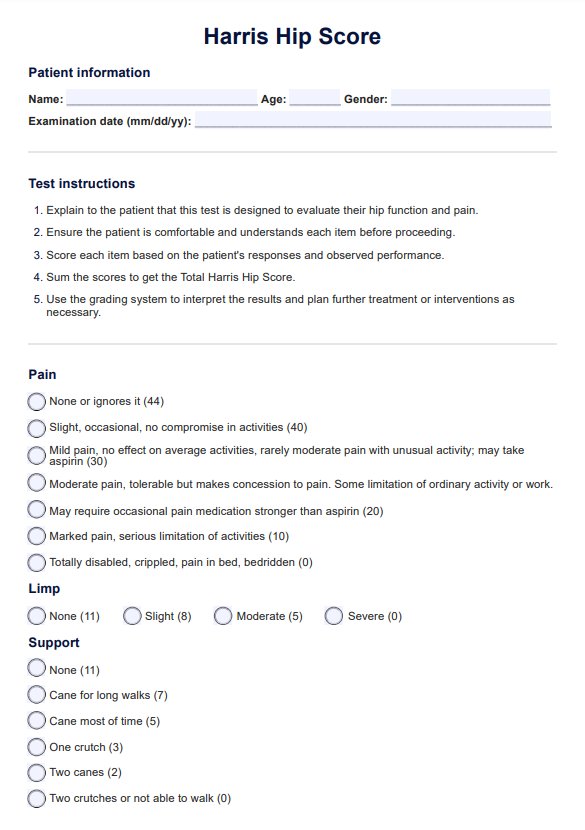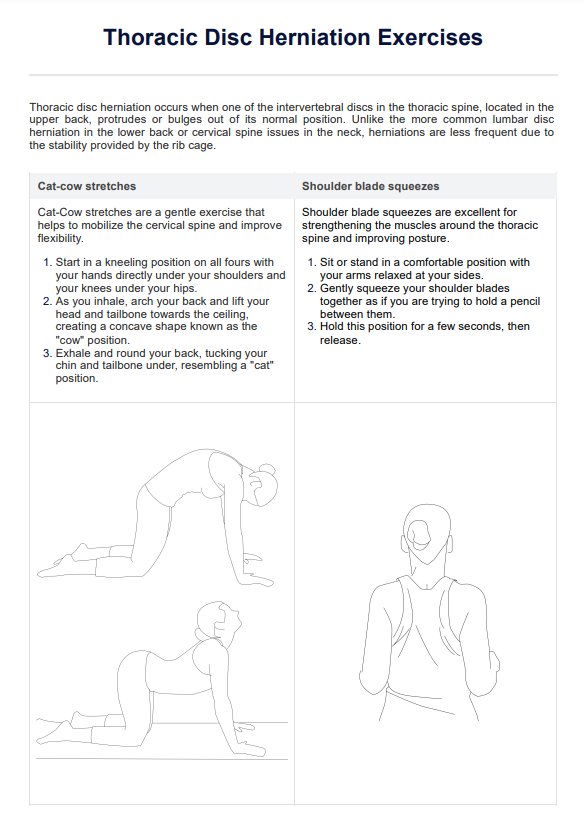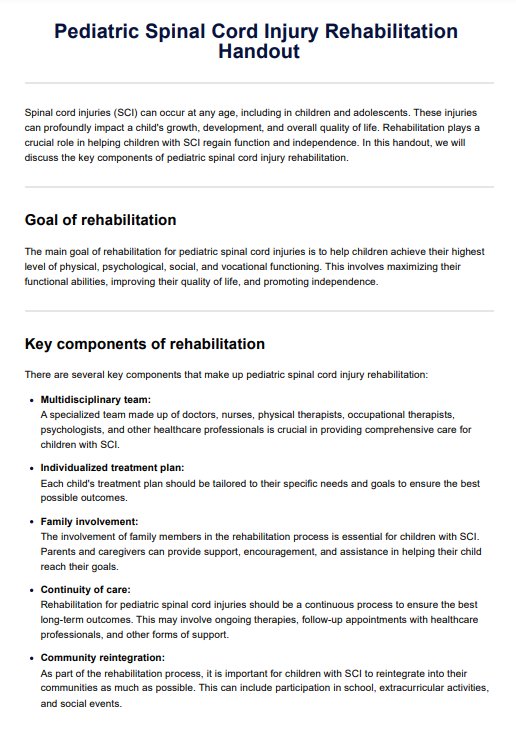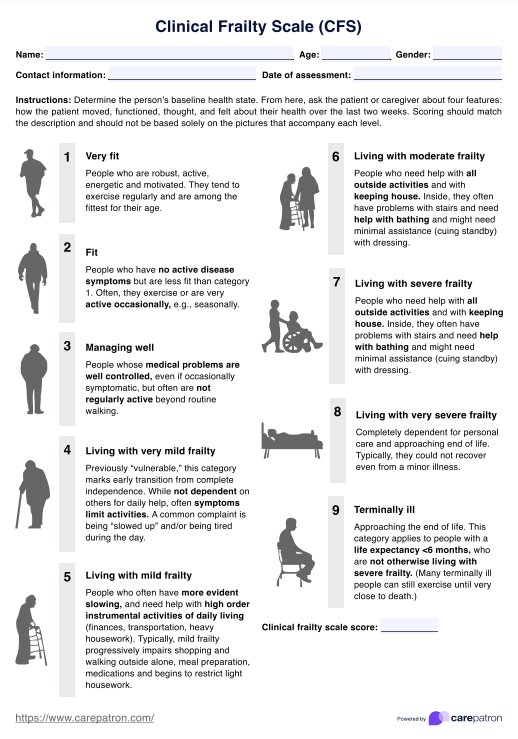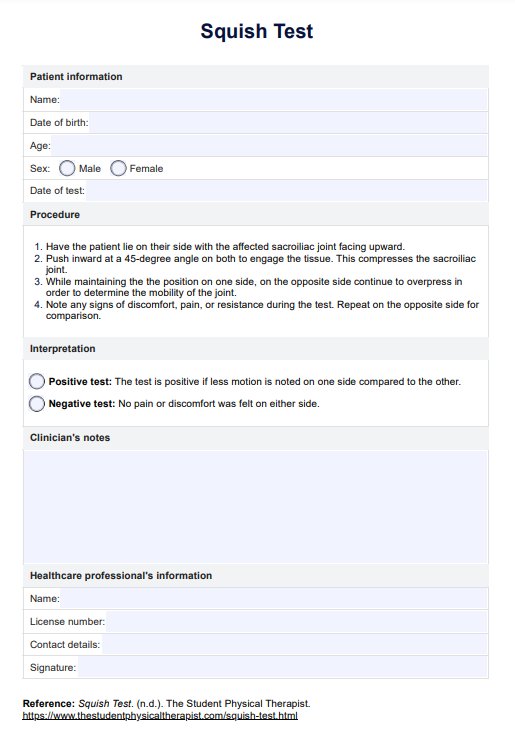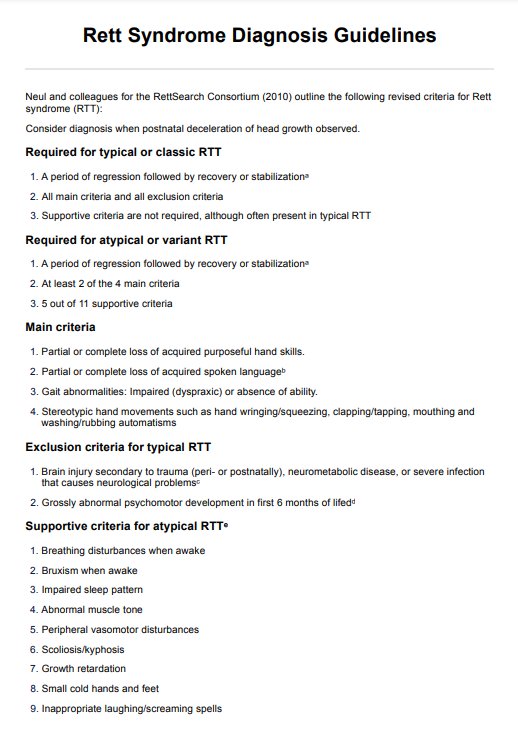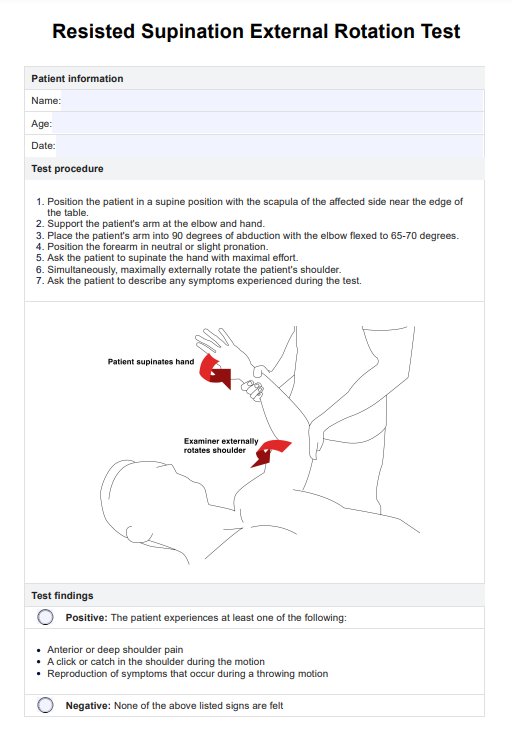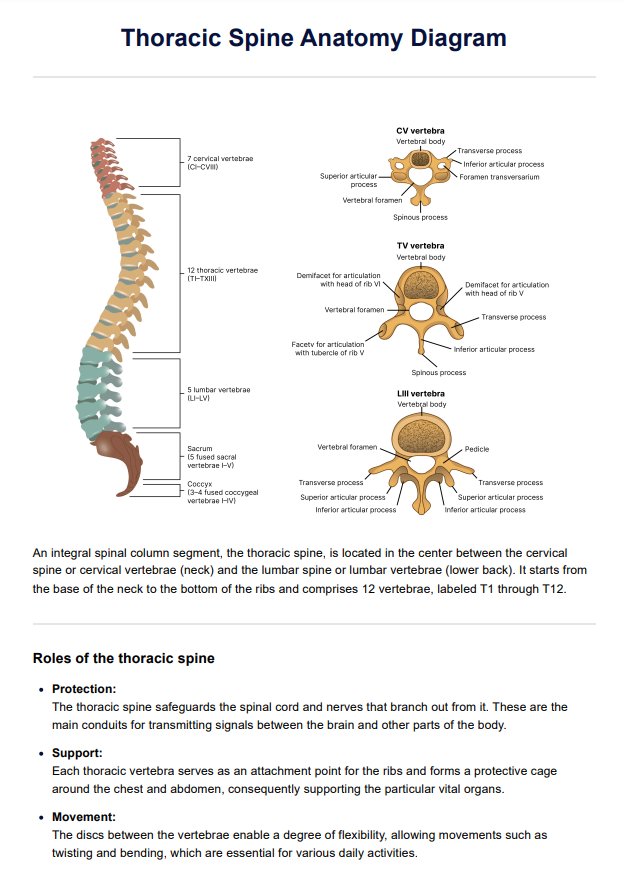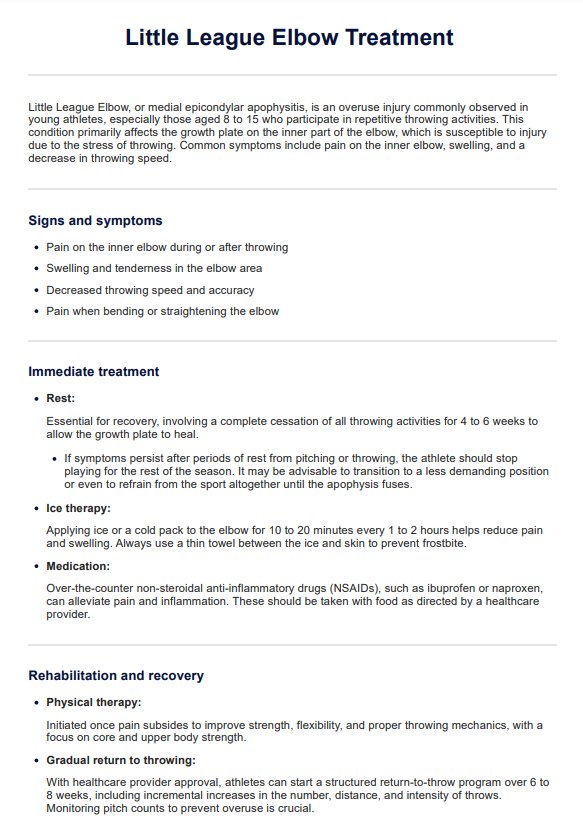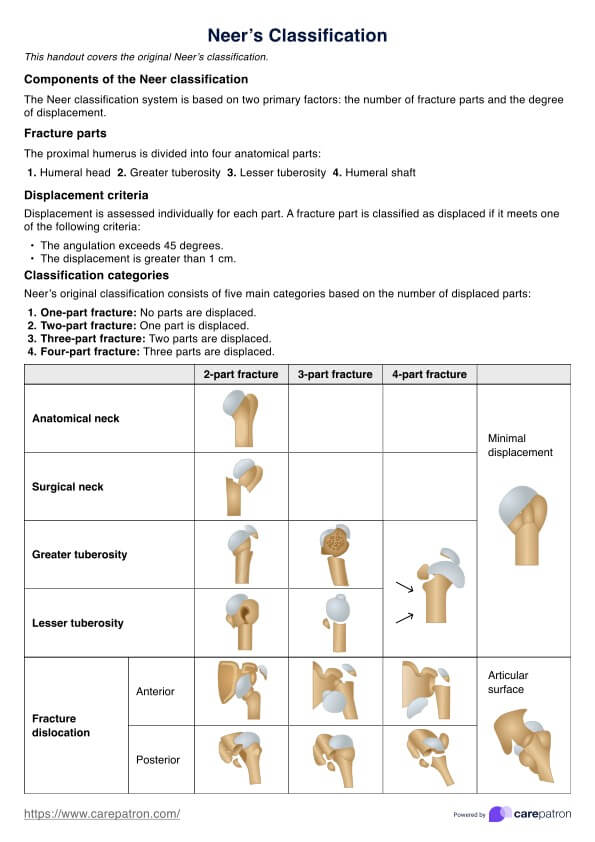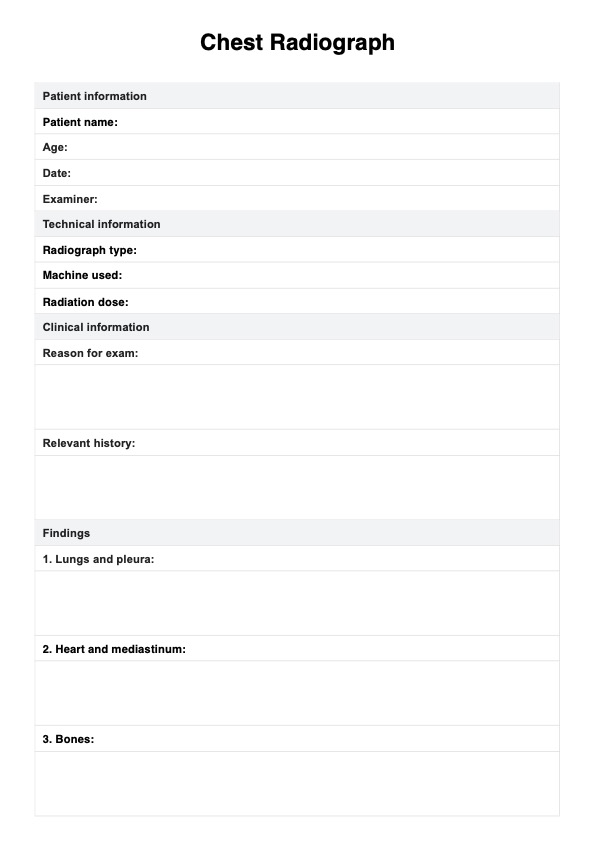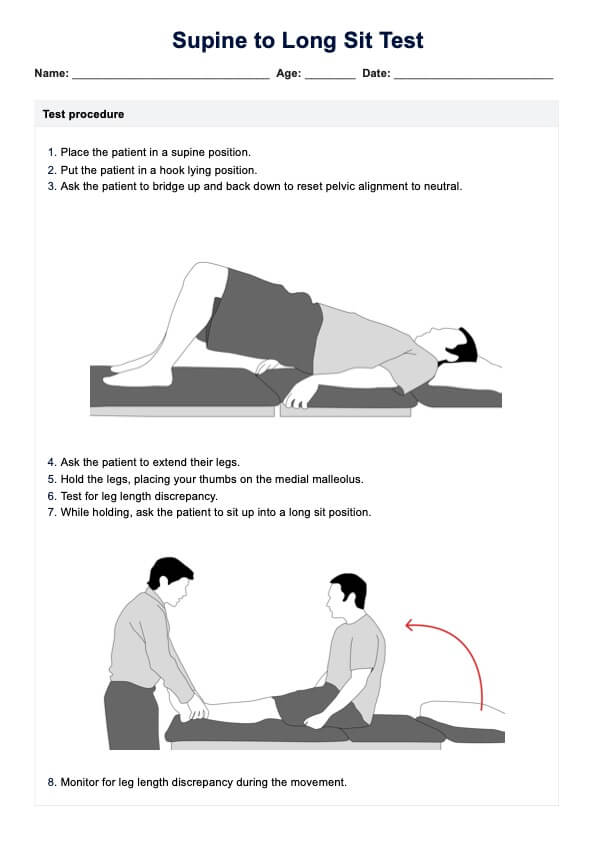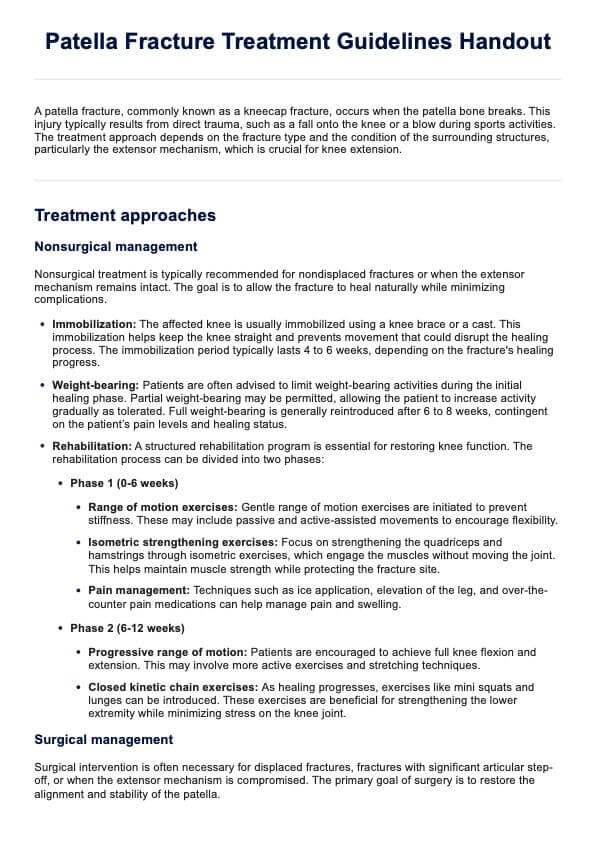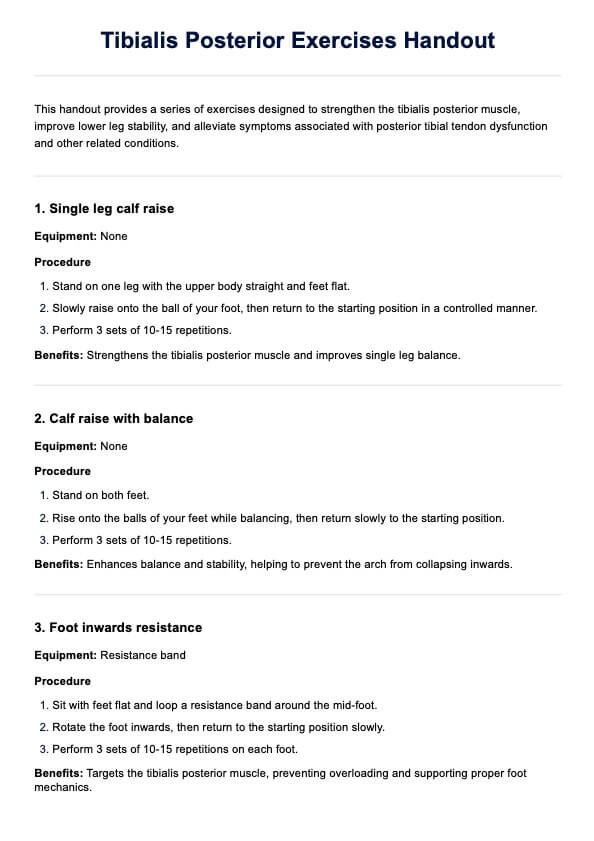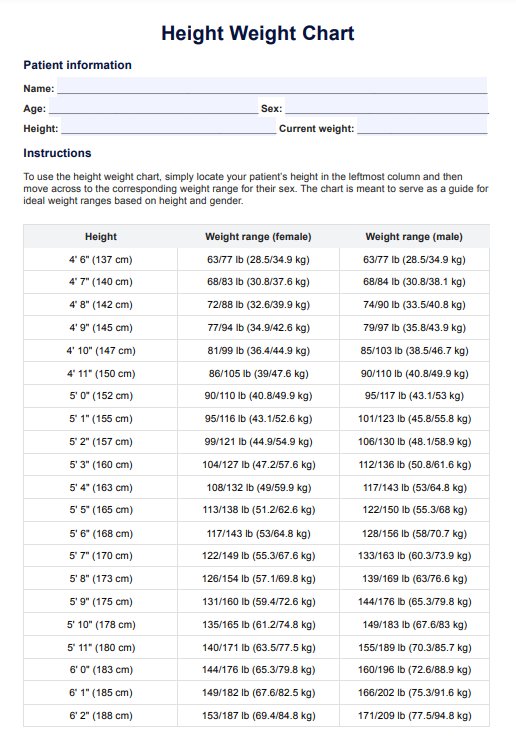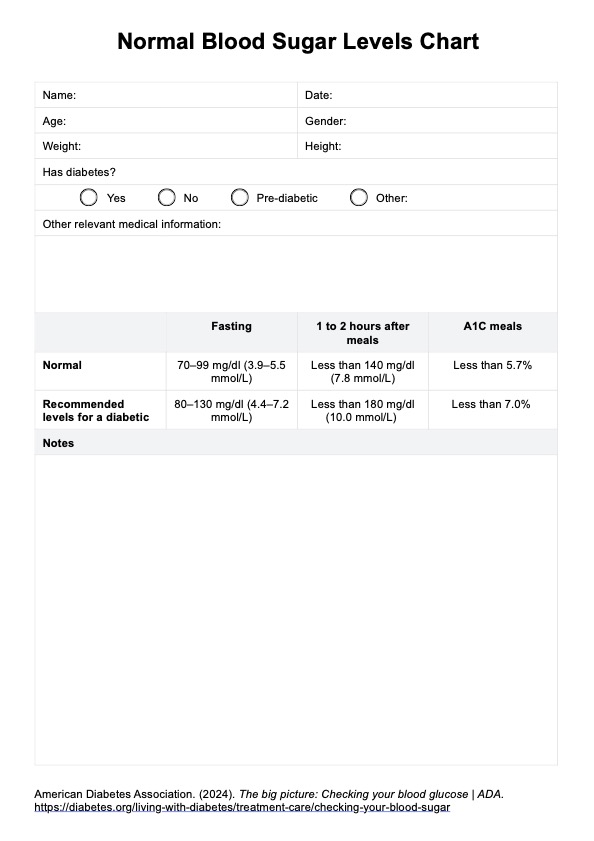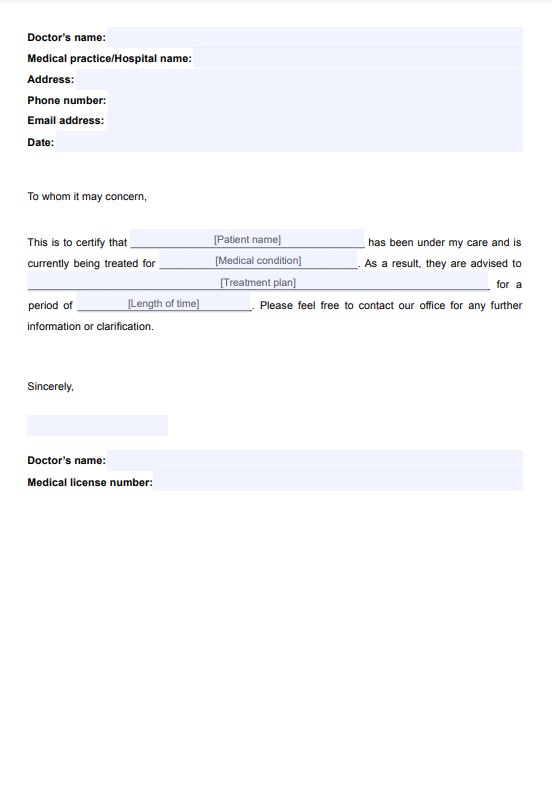Ankle Bump Test
Download Carepatron's free Ankle Bump Test PDF to assess ankle mobility and properly interpret clinical result interpretation.


The ankle joint and its functions
The ankle joint is a complex structure that connects the foot and ankle to the lower leg, enabling a wide range of motion and weight-bearing functions. It comprises the tibia, fibula, and talus, and is supported by critical structures such as the anterior talofibular ligament, posterior talofibular ligament, and surrounding connective tissues (Manganaro & Alsayouri, 2020).
This joint plays a central role in mobility, absorbing shock from activities such as walking, running, and jumping. It also supports balance and posture while facilitating smooth and controlled movement of the lateral ankle and the entire lower limb (Brockett et al., 2016).
Given the ankle's mechanical load and range of motion, it's highly susceptible to ankle injuries, particularly acute ankle sprains. Lateral ankle sprains are among the most common, often involving injury to the anterior talofibular ligament—a key stabilizer on the outside of the ankle. Repeated sprains or inadequate rehabilitation can lead to chronic ankle instability, which may compromise long-term joint function.
Clinical evaluation of suspected lateral ankle injuries often includes physical tests like the anterior drawer test and the external rotation test, which assess ligament integrity and joint stability. These assessments are crucial in diagnosing ankle injuries and determining whether the patient is dealing with a mild sprain or more severe ligamentous damage.
Proper joint care—through strengthening exercises, bracing, and education on safe movement patterns—is essential in preventing reinjury and maintaining long-term functionality of the foot and ankle. As clinicians, recognizing the delicate interplay of structures within the ankle allows for more accurate diagnosis and effective treatment planning.
Ankle Bump Test Template
Ankle Bump Test Example
What is the Ankle Bump Test?
The Ankle Bump Test, also known as the heel thump test (Lindenfeld & Parikh, 2005), is a valuable special test used to assess for syndesmotic injuries and other pathologies involving the posterior aspect of the ankle. During this procedure, a clinician applies a firm, controlled bump to the patient’s heel, directing the force upward through the ankle while the foot is in plantar flexion. A positive test is indicated by pain or discomfort—typically suggesting injury to internal structures such as bone, ligament, or interosseous tissue.
Though commonly used in conjunction with other diagnostic maneuvers like the squeeze test, the Ankle Bump Test is particularly helpful in identifying conditions that mimic or accompany acute ankle sprain and lateral ankle sprain. It may help differentiate between routine lateral ankle ligament injuries and more complex issues requiring further investigation, such as high ankle sprains or fractures.
Understanding the anatomy—especially the lateral ankle ligaments, deltoid ligament, and Achilles tendon—is critical to correctly interpreting the patient’s pain response. Improper technique or poor positioning may lead to inaccurate conclusions, including misidentifying symptoms of Achilles tendon rupture or missing instability signs better revealed through the inversion stress test or eversion stress test.
In athletic training and clinical settings alike, the Ankle Bump Test offers a quick, hands-on method for identifying deeper issues in the ankle joint and informing decisions about imaging or referral. Its value lies not only in its simplicity but in its ability to highlight cases that require further diagnostic workup and management.
How does our Ankle Bump Test template work
The Ankle Bump Test can be seamlessly integrated into your clinical workflow using Carepatron’s intuitive digital template. Each step—from accessing the form to documenting and interpreting findings—is designed to support accurate assessments, consistent charting, and better clinical decision-making during musculoskeletal evaluations.
Step 1: Access the test template
Click the “Use template” button on this page to instantly launch the Ankle Bump Test within the Carepatron app. This allows for streamlined documentation, direct access to test protocols, and secure data capture—all without interrupting your clinical flow.
Step 2: Use the template in patient assessment
Begin the consultation by opening the template and filling in patient information, including name, date of birth, and relevant health details. This creates a structured record to accompany your physical examination and ensures all test steps and outcomes are properly tracked.
Step 3: Conduct the test
Follow the procedure outlined in the template: position the patient correctly, stabilize the leg, and apply force through the calcaneus. The embedded instructions ensure consistency and help reduce variability in how the Ankle Bump Test is administered across different practitioners.
Step 4: Gather and interpret findings
Use the provided fields to record whether the test was performed, detail any pain elicited during the maneuver, and select your interpretation based on the clinical response. This supports quick decision-making and creates a standardized format for syndesmotic injury documentation.
Step 5: Discuss findings with patient
Once the test is complete, review your findings with the patient using the clear interpretation guide built into the template. This enables you to communicate possible diagnoses with clarity, set expectations, and involve patients in shared decision-making.
Step 6: Provide patient support and next steps
Use the “Additional notes” and healthcare information sections to document your clinical recommendations, including imaging referrals, follow-up appointments, or rehabilitation plans. Carepatron makes it easy to maintain continuity of care through organized, accessible documentation.
Benefits of using this test
The Ankle Bump Test provides clinicians with a fast, effective tool for evaluating ankle pain and identifying potential syndesmotic injuries. When used alongside other special tests—such as the talar tilt test, anterior drawer sign, and positive drawer test—it supports a more complete assessment of sprained ankles, especially when pain is localized to the lateral aspect of the joint.
One key benefit is its ability to aid in the differential diagnosis between high ankle sprains and injuries involving the lateral ligaments, including the calcaneofibular ligament and anterior tibiofibular ligament. By applying a targeted force through the calcaneus with the knee bent, the test helps pinpoint deeper, less obvious damage that may not be revealed by inversion or eversion testing alone.
For medical professionals, this test enhances clinical workflow by offering a quick and reproducible method that can be documented consistently. It supports early decision-making and streamlines the pathway to imaging or specialist referral when necessary.
References
Brockett, C. L., & Chapman, G. J. (2016). Biomechanics of the ankle. Orthopaedics and Trauma, 30(3), 232–238. https://doi.org/10.1016/j.mporth.2016.04.015
Lindenfeld, T., & Parikh, S. (2005). Clinical tip: Heel-thump test for syndesmotic ankle sprain. Foot & Ankle International, 26(5), 406–408. https://doi.org/10.1177/107110070502600512
Manganaro, D., & Alsayouri, K. (2020). Anatomy, bony pelvis and lower limb, ankle joint. In StatPearls. StatPearls Publishing. https://www.ncbi.nlm.nih.gov/books/NBK545158/
Commonly asked questions
The bump test ankle, also known as the Ankle Bump Test or heel thump test, is a physical examination technique used to assess for syndesmotic injuries or potential fractures. It involves applying a firm force to the heel to transmit stress through the tibia and fibula, monitoring for pain in the ankle joint.
The bump test is used to determine the presence of a high ankle sprain, particularly involving the syndesmosis or potential bony involvement. Pain elicited during the test may indicate injury to the anterior tibiofibular ligament, interosseous membrane, or other deeper structures.
Three commonly used special assessments for ankle sprains are the anterior drawer test, talar tilt test, and squeeze test. These tests help identify ligamentous injuries, including damage to the anterior talofibular, calcaneofibular, and syndesmotic ligaments.
To test an ankle injury, perform a focused physical exam using special tests such as the Ankle Bump Test, anterior drawer, and talar tilt, based on the suspected injury mechanism. Each test targets specific ligaments or structures to evaluate the extent and location of damage.



